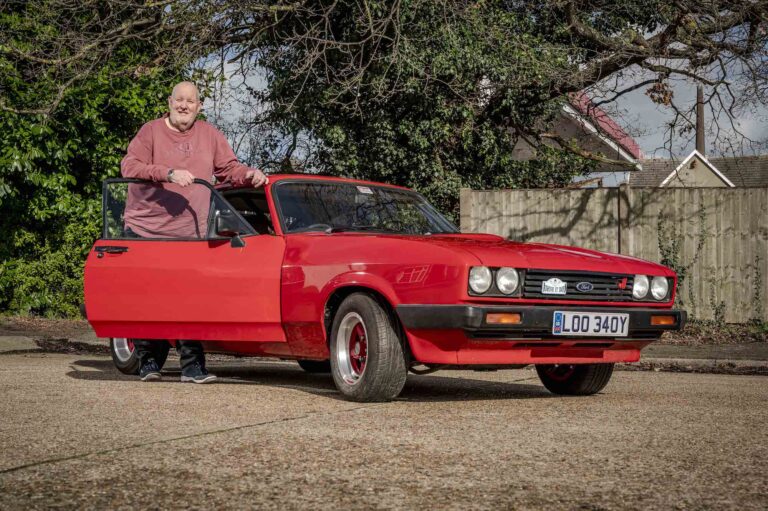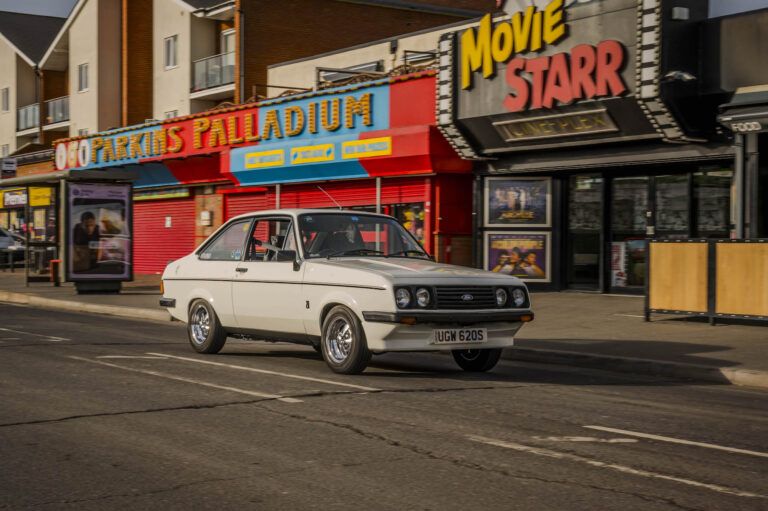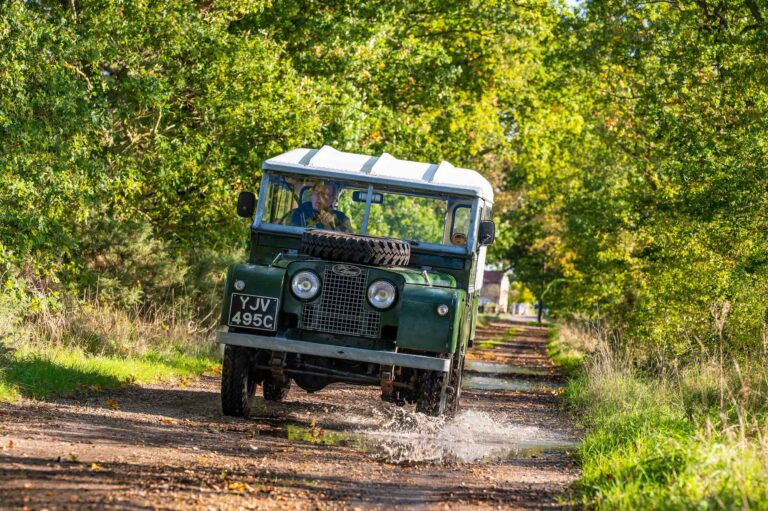The Buicks of 1958 hit the zenith of automotive excess; big, bold, and lavished with more chrome than any American production car ever made.
So when a 20-year-old Clive Landa parked a huge Century Riviera Sedan outside his parents’ house in Leeds, it was bound to get the curtains twitching.
It was 1976, the world had only partially recovered from the first of the decade’s great oil crises, and a long, hot summer was around the corner when Clive spotted the Buick for sale in the local paper.
At the time, he was driving around with his then girlfriend, now wife, Rosie in a Russian Moskvich van, which he says was “horrible, a bit like a tractor”.
“We went to see the Buick and I said ‘do you want to swap for a Moskvich van?’” says Clive, a smile breaking out. “He said yeah! But I had to give him £200 as well.”
The Century has been a constant throughout the couple’s life ever since, through moves to Hemel Hempstead and their current home in the Fens just outside Wisbech.
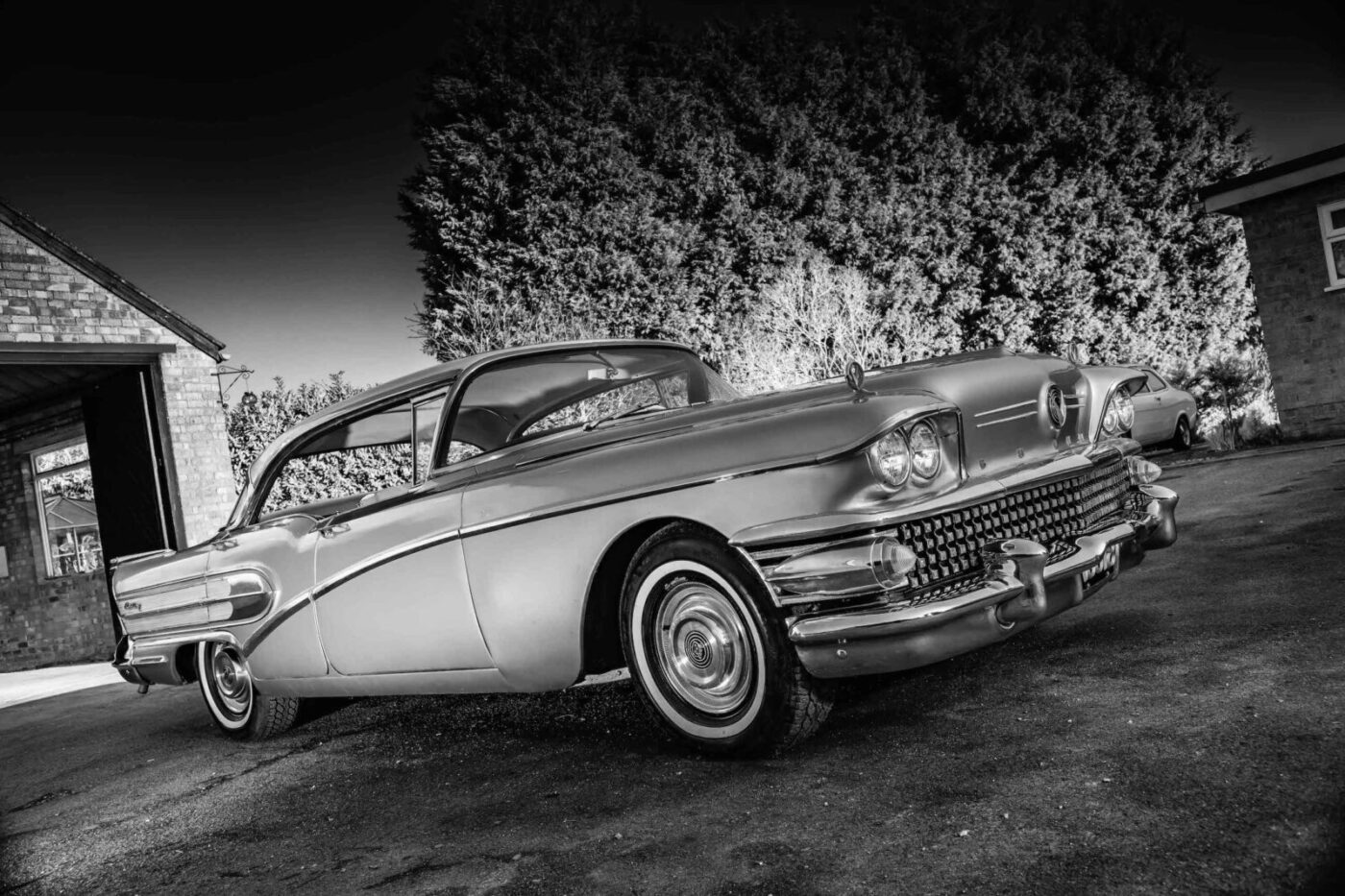

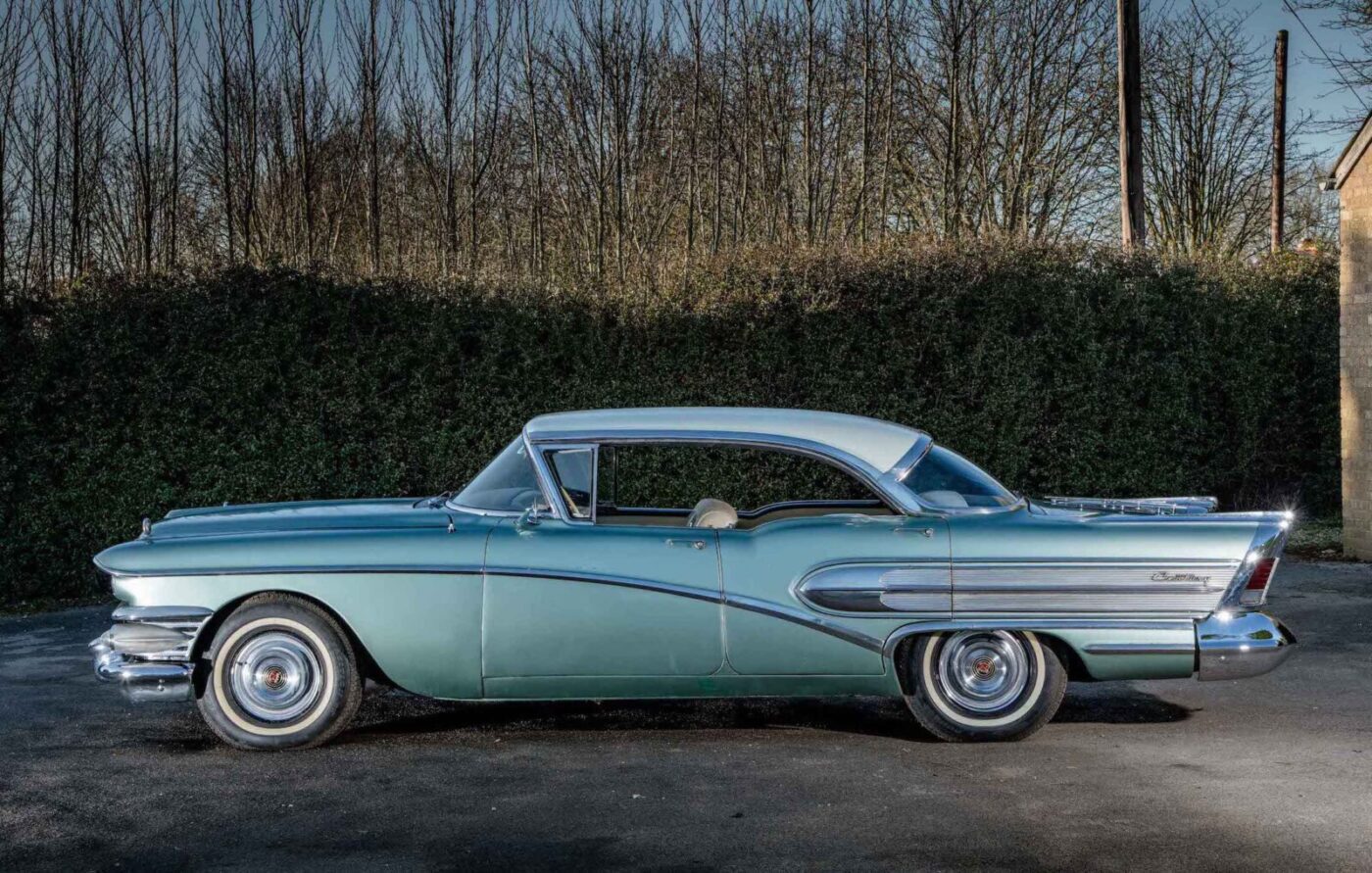
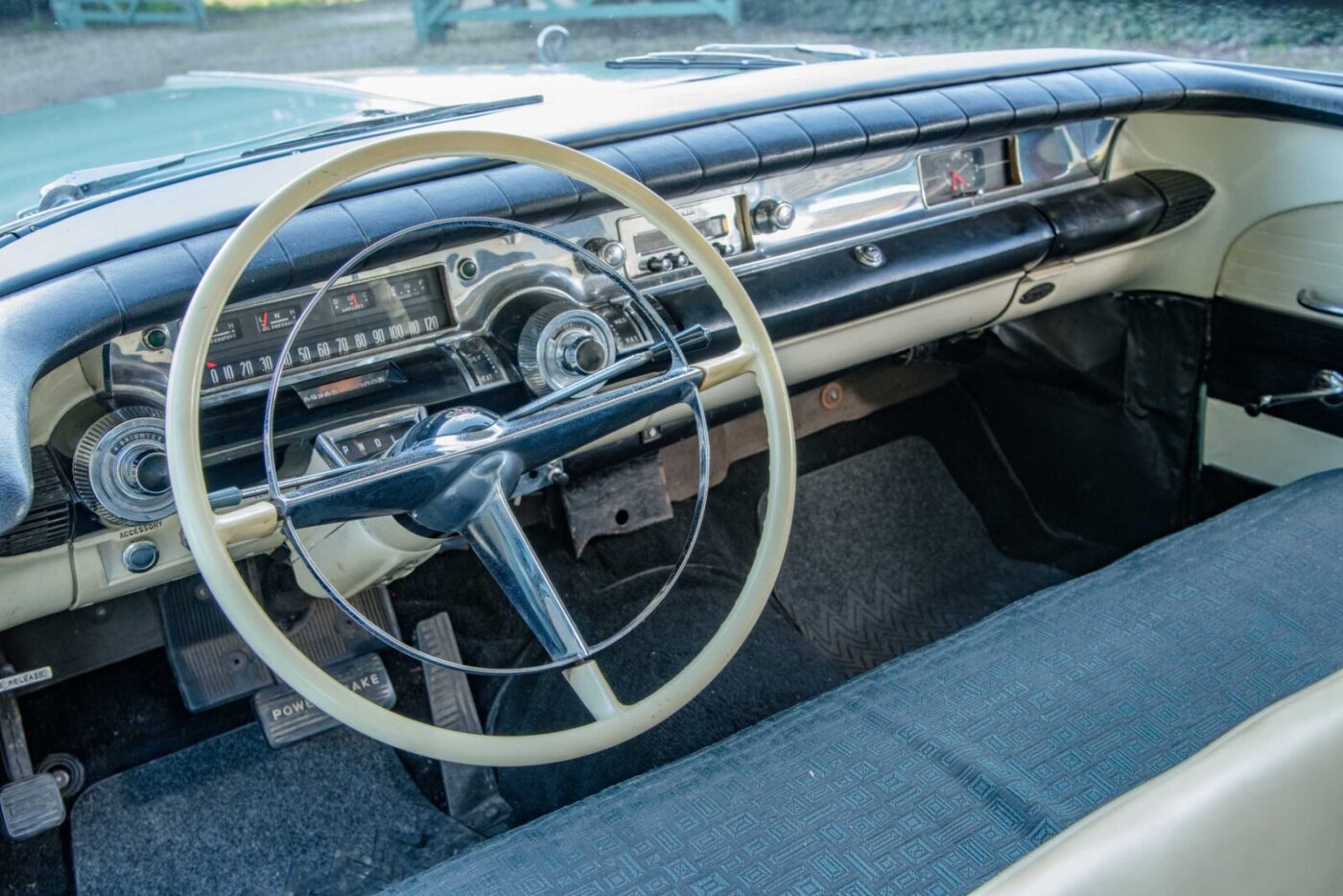
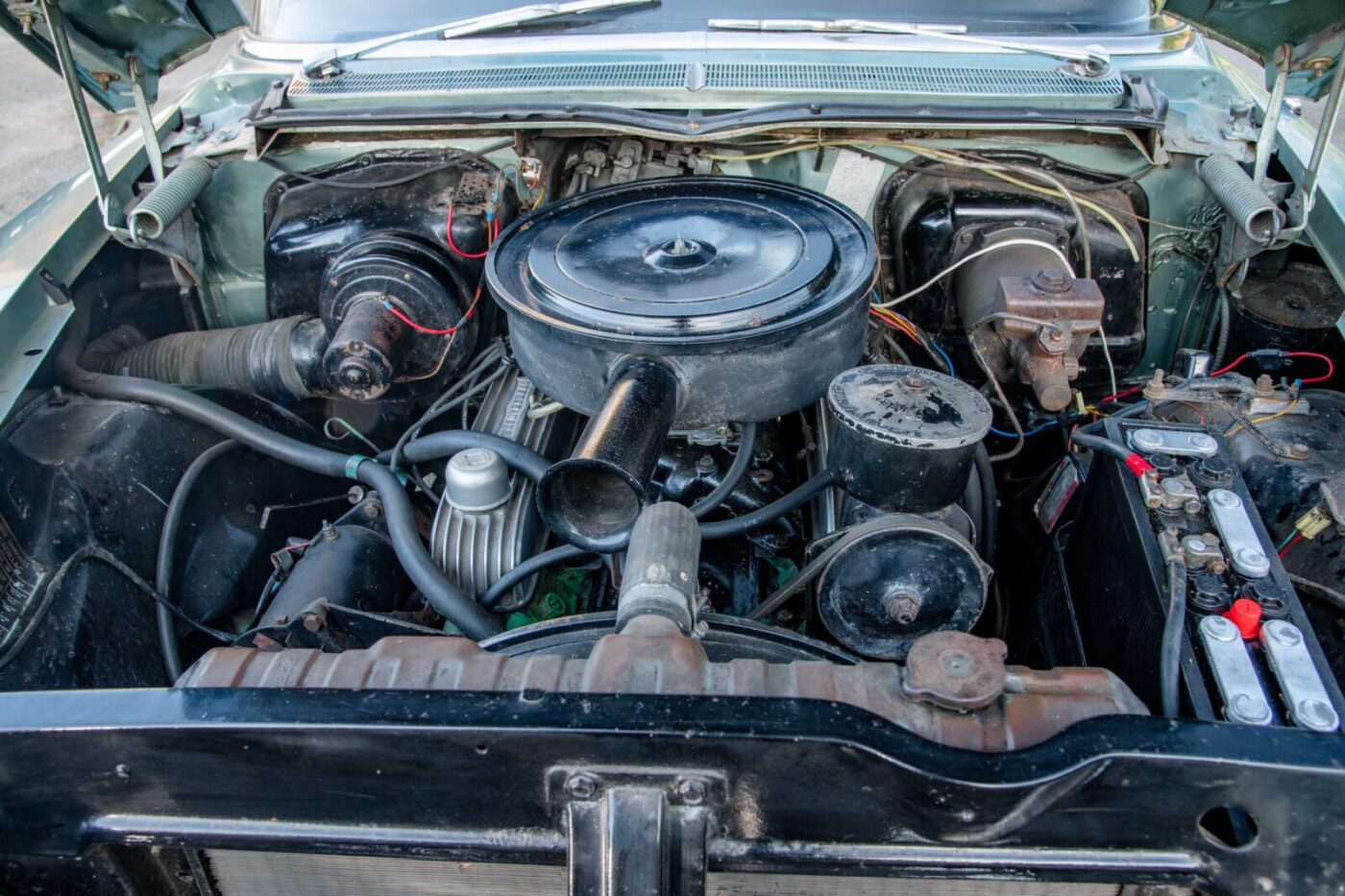
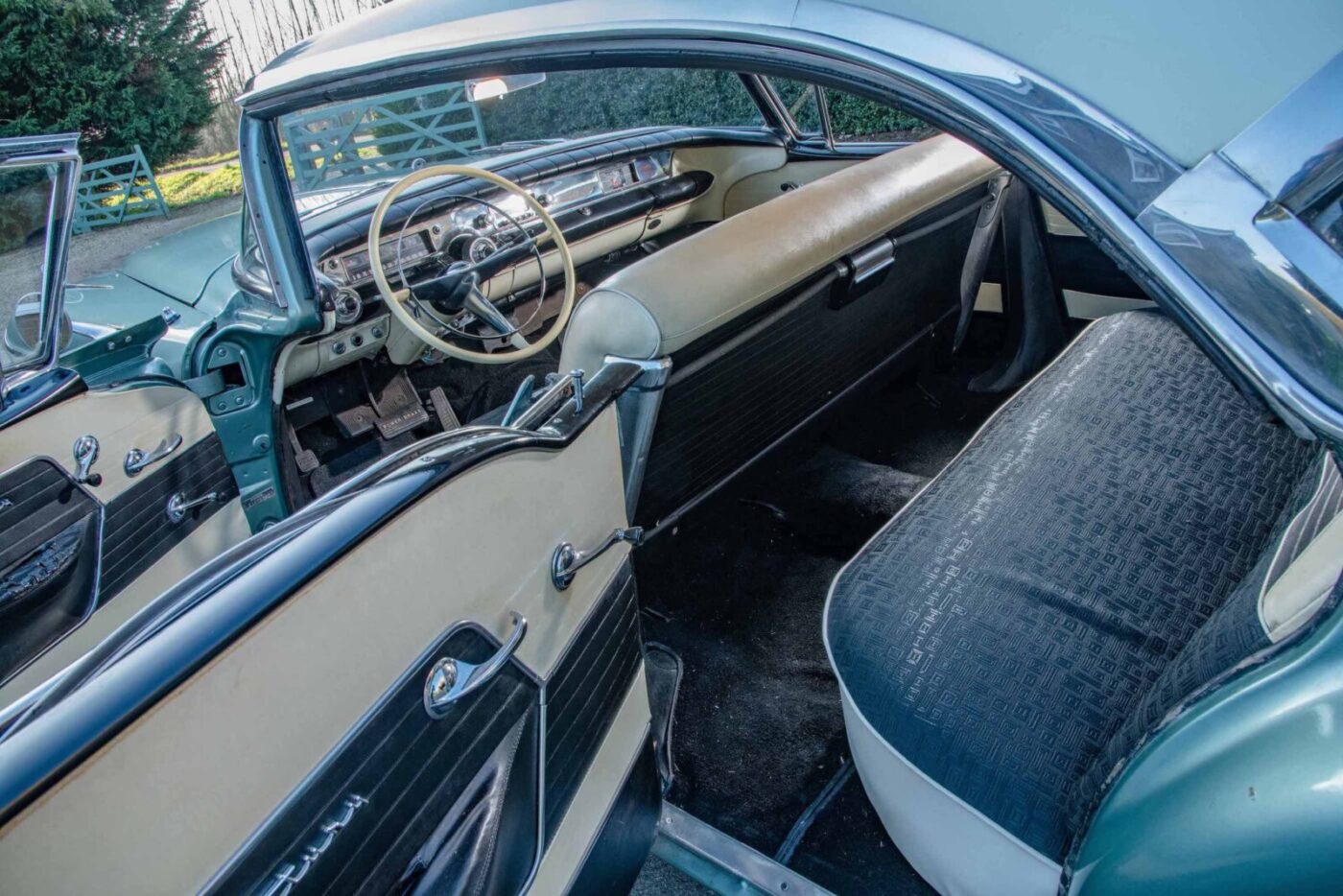
“You can’t sell it dad”
Their two daughters, Rachel and Natasha, grew up with the car, and even persuaded their father not to sell it when he was toying with the idea about a year ago.
“Both of them, separately, said ‘you can’t sell it dad’,” he says, sitting with Rosie at the kitchen table.
She adds: “When the girls were probably about six upwards they suddenly noticed the car.
“It was always there, but it was suddenly ‘wow’ he’s got this car, so Clive used to occasionally take them out in it because they could go on the front bench seat together with no seat belts. “They thought it was great, and it’s a bit special to them.”
Initially dubbed “Baby Buick” – one very big baby – over the years they’ve considered renaming the car Christine, after Stephen King’s malevolent Plymouth Fury that had a mind of its own.
Clive tells the story of a dealer just outside Leeds who would clear American airfields of scrap metal and discarded cars, piling cars on top of each other in order of age, starting with the 1940s vehicles at the bottom and ‘70s cars on top.
“He would sell parts, and I got a couple of parts off cars. That’s when he asked me ‘what’s the registration number of the car?’” he says.
“Mine’s VJJ 18, and he said ‘my brother had that, then he got another one which is out in the yard’.
“I went and had a look and its registration was VJJ 19, and it was originally the same colours as mine, sylvan grey with a white roof.
“He told me when his brother had mine, he had been taking the gearbox out, which is a beast of a thing made of cast iron, and it had dropped on his chest and eventually he died of complications. I don’t know if it’s true, but I never met his brother, so I’m always wary of going underneath it.”
READ MORE ABOUT SOME OF OUR GREATEST CLASSIC CARS WITH

A series of articles on our Cult Classics site.
“It’s definitely got a personality”
“She’s a bit of a contrary Mary, and very frustrating,” adds Rosie. “You’re always nervous that something’s going to happen and you’re not going to get back home again for ages.”
“It’s definitely got a personality,” says Clive, recounting a weekend-long breakdown in Scarborough, an engine fire, a malfunctioning horn, and a faulty windscreen wiper vacuum pump.
“So it is a bit like Christine. I just wish it would self-heal itself…”
The couple met at high school in Leeds, and started dating just after completing their O levels, Clive leaving school to work as a power systems engineer for Yorkshire Electricity while Rosie stayed on to do A levels before attending teacher training college in Scarborough.
At 17, Clive was desperate to get his first car, passing his test soon after his birthday and buying a Standard 10 for the princely sum of £25.
“I think it was on its way to the scrapyard really,” he says. “I hand painted it and put Dougal and Dylan stickers on the side from the Magic Roundabout.
“We had that about a year, then a mark 1 Cortina that Rosie crashed into a wall, so that went pretty rapidly, followed by a Vauxhall Viva HA.”
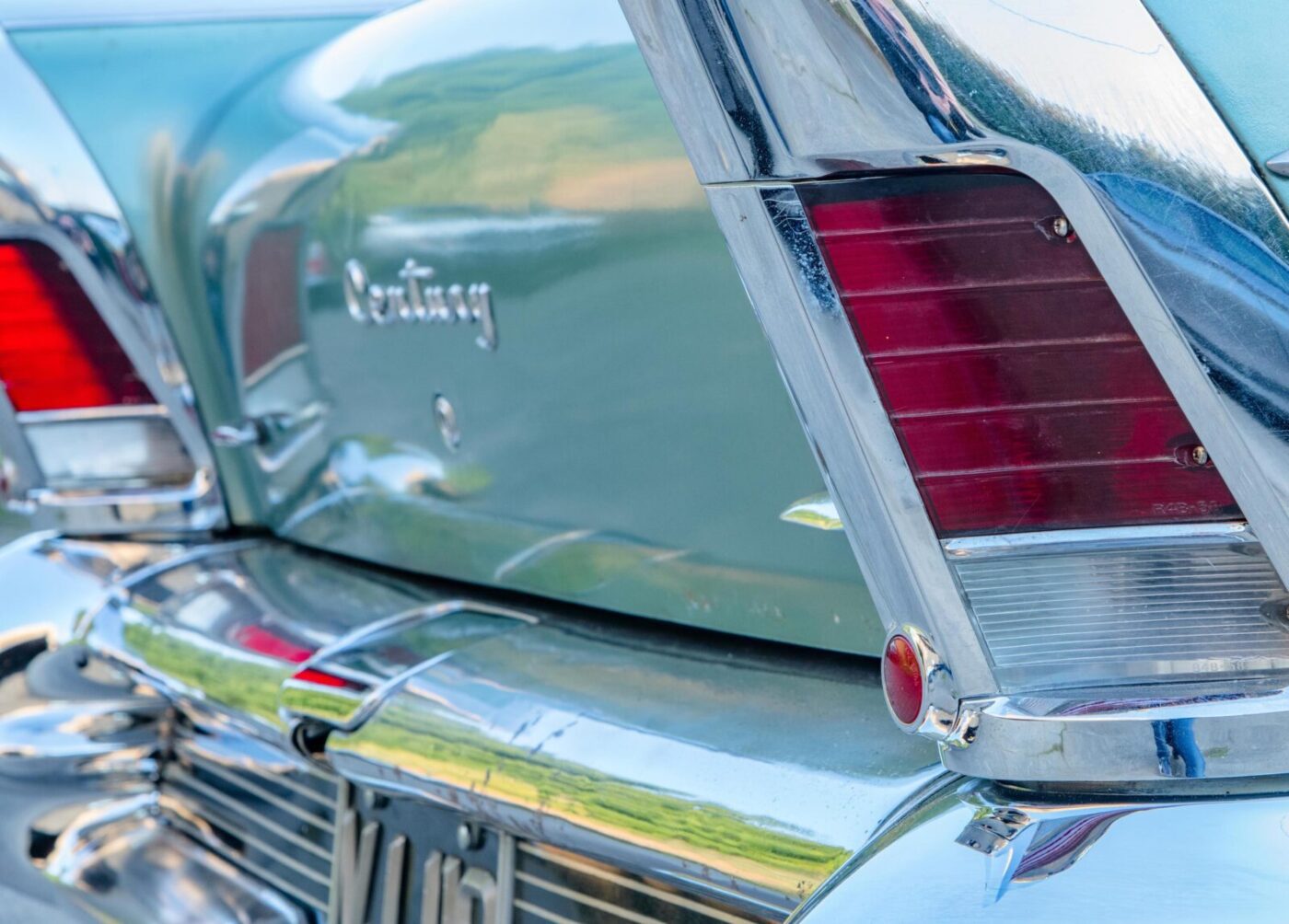
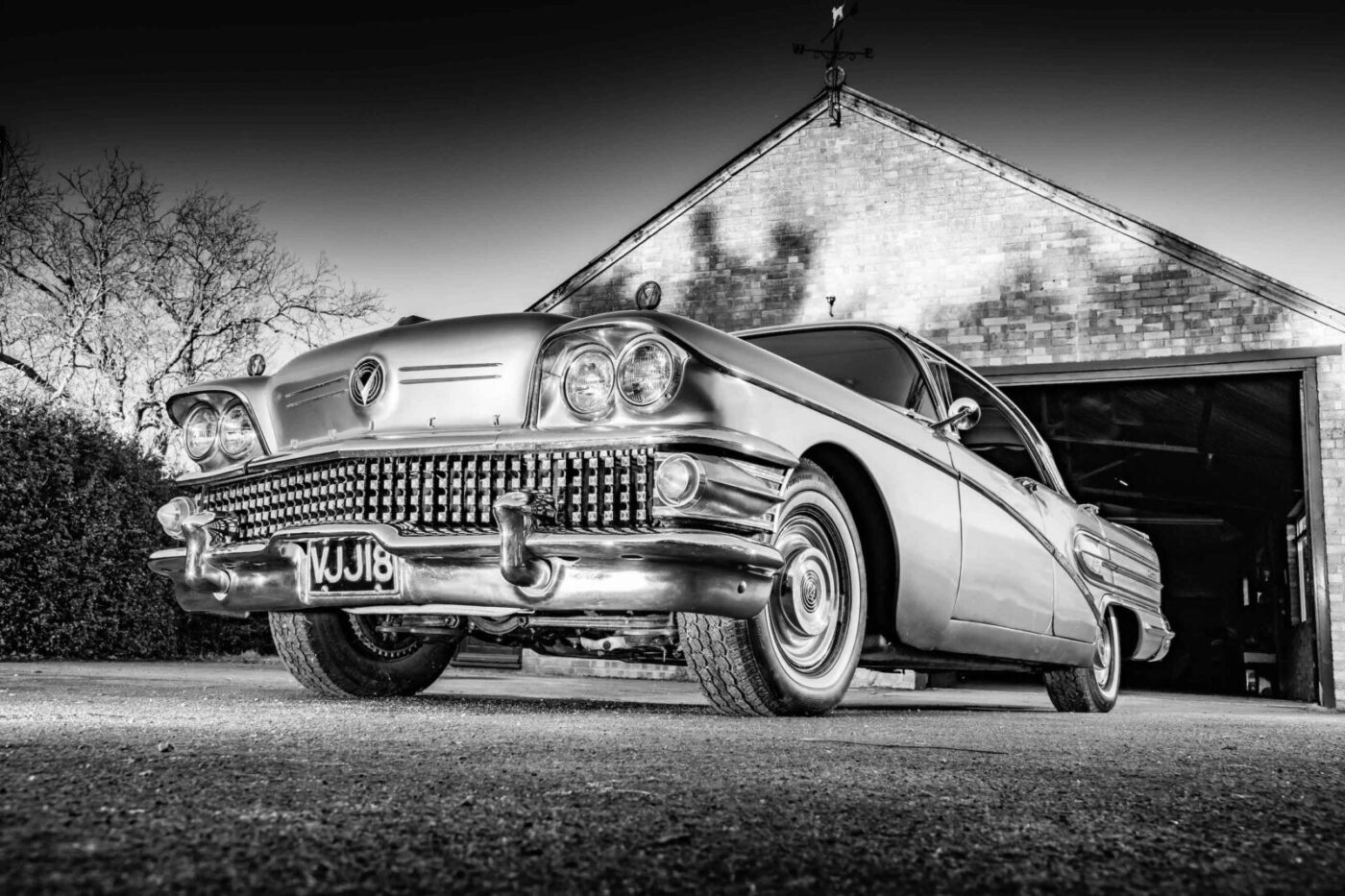
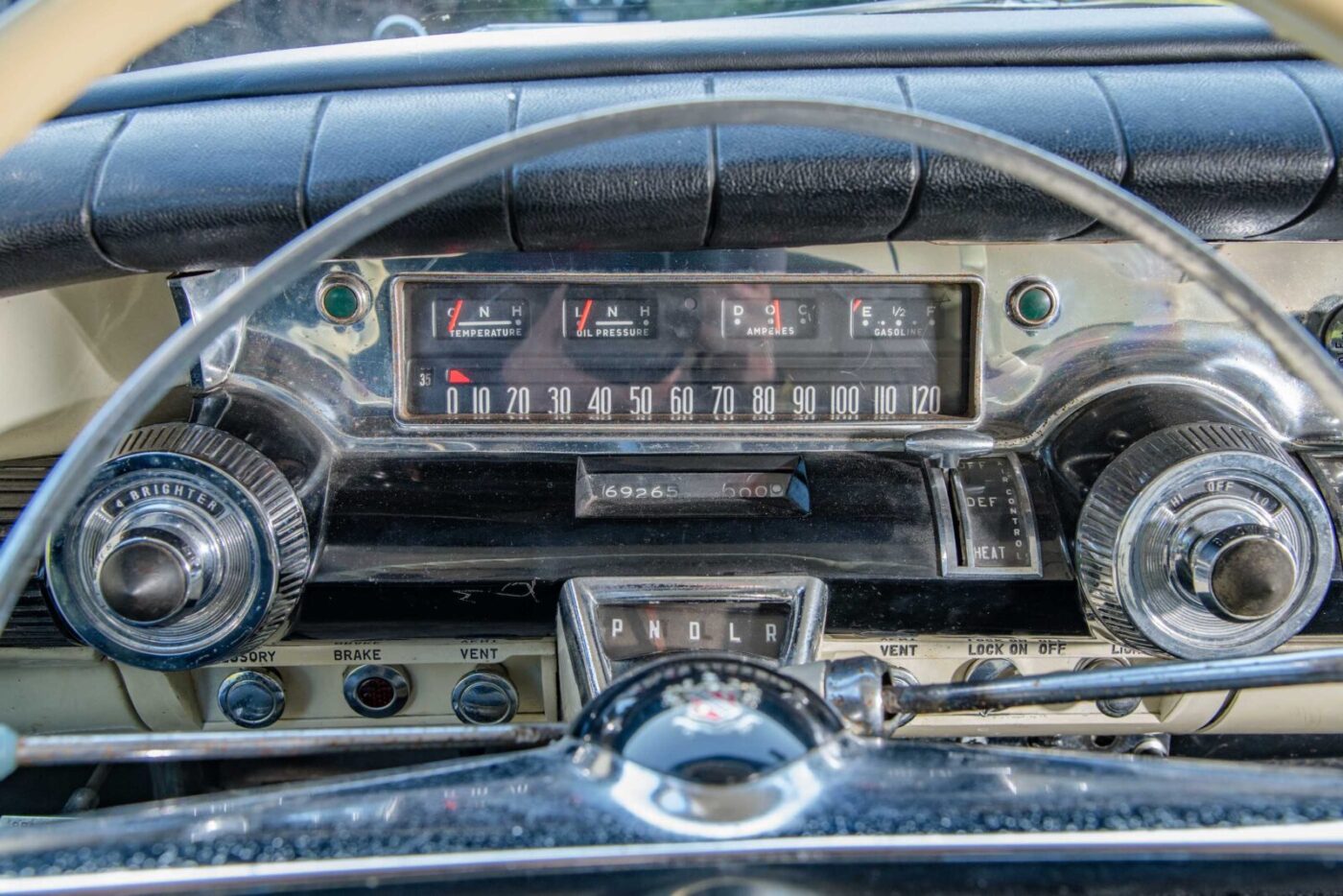
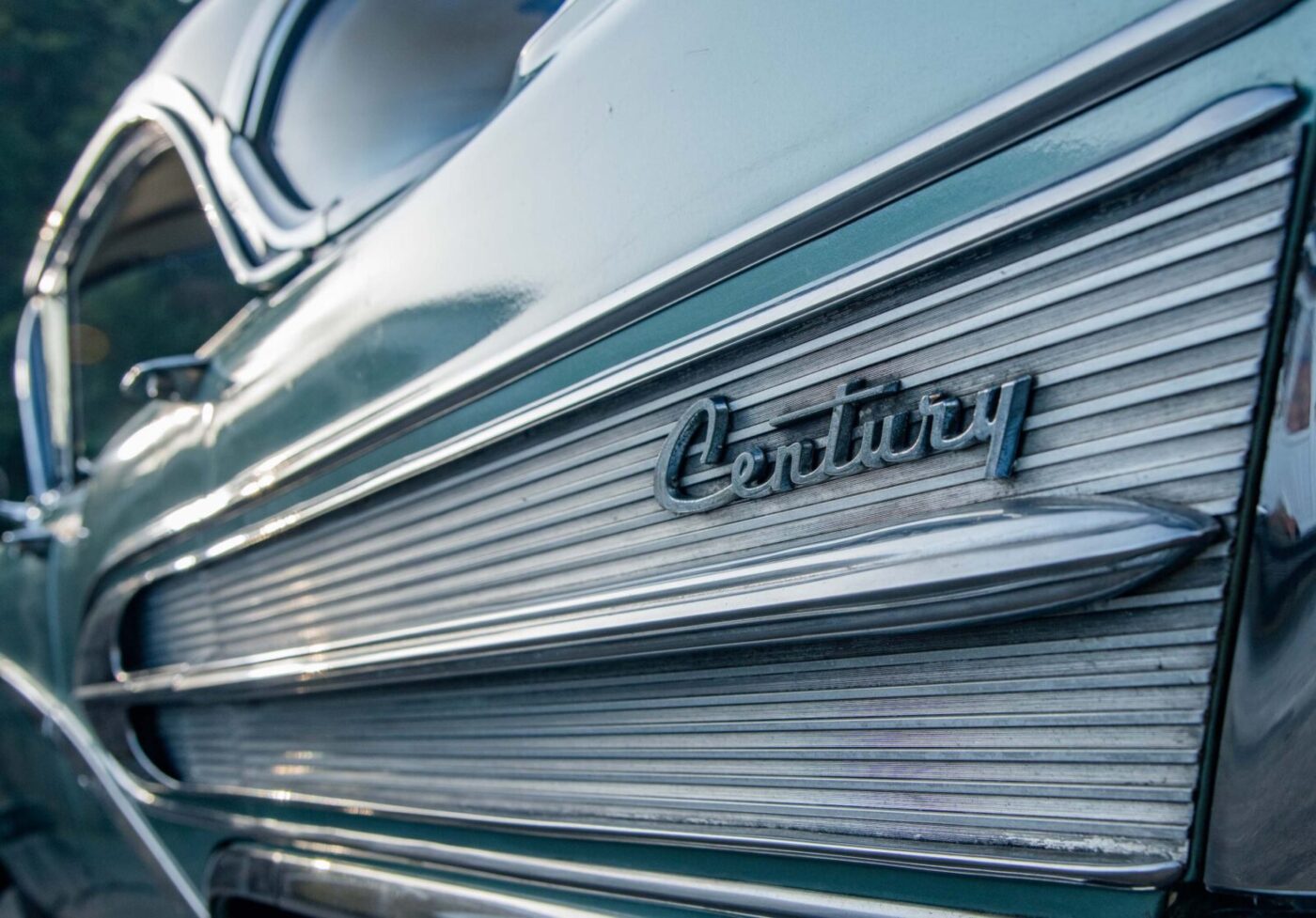
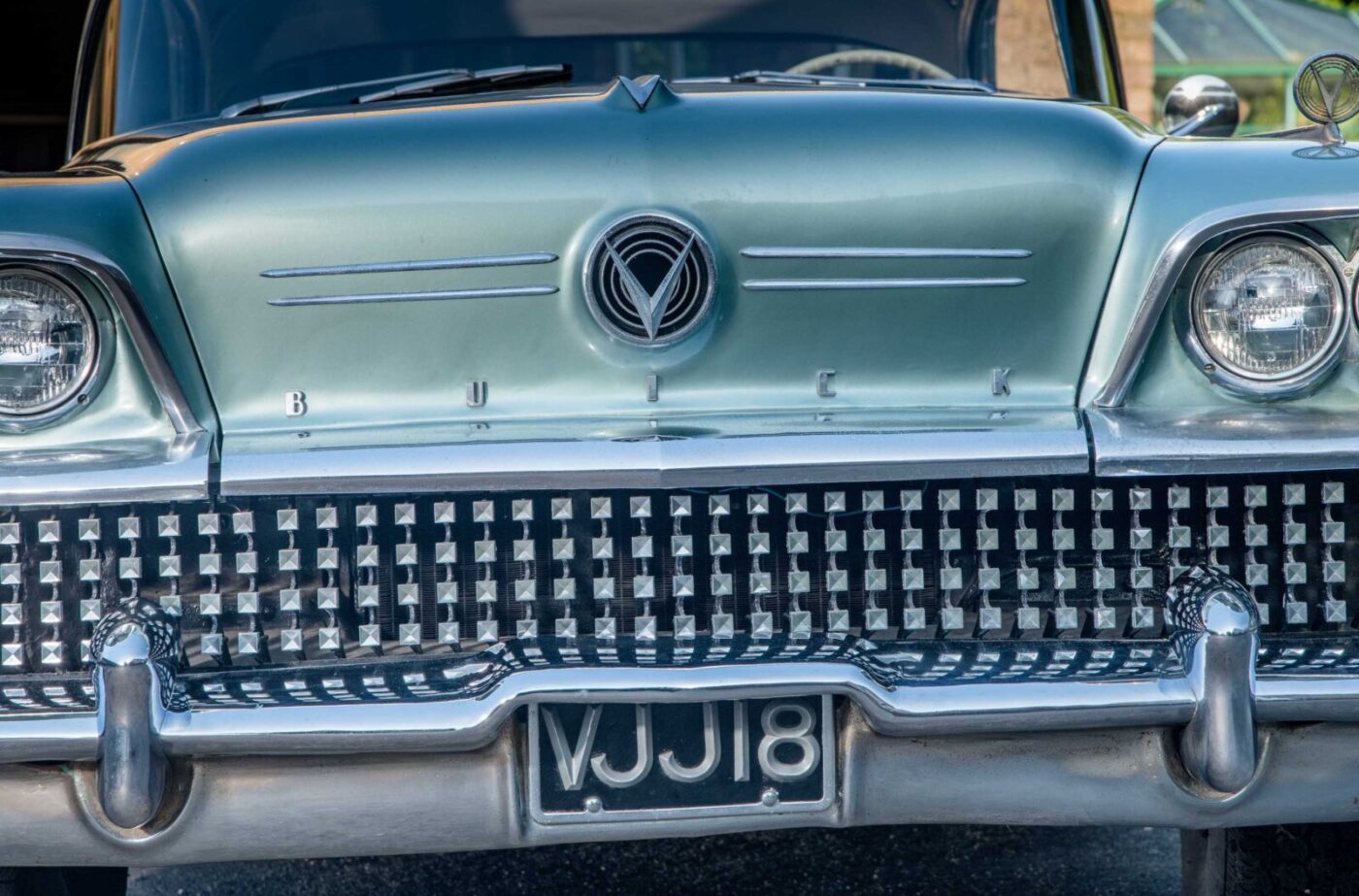
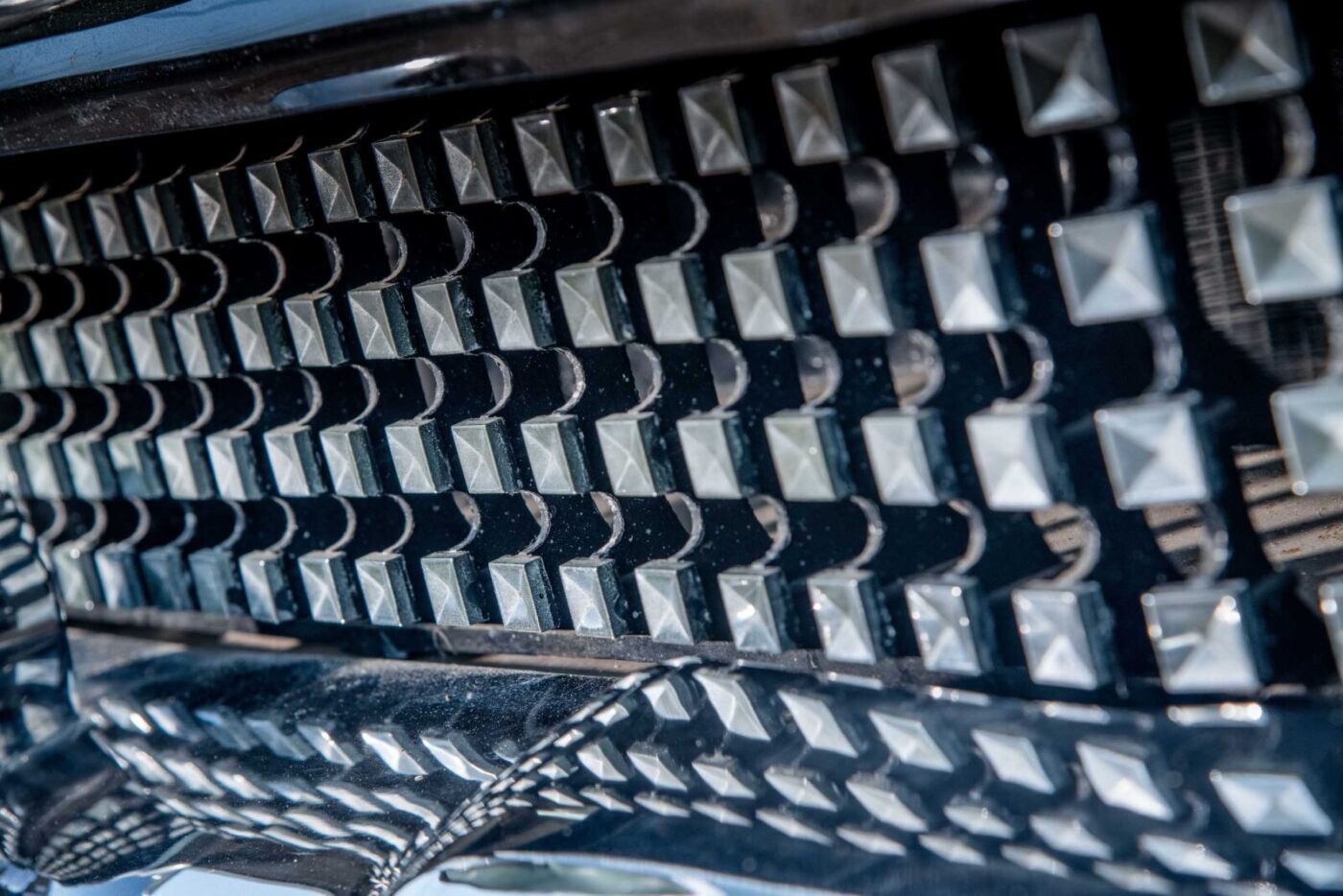
King of Chrome
The low mileage Moskvich van was bought “for a pittance” from a friend of Clive’s father who had stopped driving, but the big American car they called the “King of Chrome” was calling.
“At that time in Leeds, there were a lot of custom and American cars, and also the film, American Graffiti, was really popular at the time, which featured a lot of ‘50s American cars,” says Clive, keeping the couple’s chocolate-spotted dalmatian, Kiki, occupied while we chat.
“I wasn’t looking in particular for a Buick, just an old ‘50s American car.”
By the time he and Rosie turned up to look at the Century, he knew exactly what he was in for.
“One of my uncles was into models, and he had this set of books called Mechanics Illustrated, American books from the ‘50s, and in there were pictures of Buicks so I was able to look it up and find out all about it before I went to see it,” he says.
Not so Rosie, who had “not a clue what it was, he didn’t even show me a picture”, until they pulled into a petrol station on their way to view the car.
“What seemed like this humongous car drove in and Clive said ‘that’s it, that’s the one we’re gonna buy’,” she says.
“I said ‘that?!’ I just thought, ‘oh no’.”
Clive’s mum was also less than impressed on returning from holiday to find the hulking gas guzzler parked outside.
“When they came home, my mum was repulsed and said ‘is that yours outside?’ I said ‘yeah’,” he laughs. “Not impressed, no.”
Unbowed, even in the early days Clive knew he’d found his forever car, even if the ensuing drought meant he couldn’t wash it all summer.
81.5% of customers could get a cheaper quote over the phone
Protect your car with tailor-made classic car insurance, including agreed value cover and discounts for limited mileage and owners club discounts

Keep it forever
“I think I said I’d keep it forever,” he remembers. “I wanted to be buried in it, but I think I’ve grown out of that now.”
“He had seen a picture of all these ‘50s cars in America, buried nose down in the ground and he decided that would be good, he’d be buried in that with the car as a headstone,” says Rosie.
Initially, while still living with his parents, Clive managed to find a garage big enough to rent nearby.
“It fit, just,” he says. “I was skinny then, and could just about get in and climb out through the window.
“I used to go to work in it, and it didn’t fit in the car park slots, so I had to park it sideways. I got all sorts of comments.”
When it was launched, the Century, along with its upmarket sister cars the Roadmaster and Limited, was famous for its chrome-laden exterior, especially a grille made up of 160 faceted chrome squares.
The grille was even given its own name, the Fashion-Air Dynastar, while there’s plenty more chrome on the traditional ‘50s jukebox-style dashboard, complete with original – and working – valve radio.
More than 17ft long, the pillarless coupe weighed in at about two tonnes, but still had lively performance from its 300bhp, 364cu in (6-litre) Fireball V8.
The cars were styled to mimic jet aeroplanes, with gun sight ornaments on each of the front wings, and the even the two-speed transmission was called Flight Pitch Dynaflow.
“It’s a variable automatic transmission, which never actually changes gear,” says Clive. “It’s very inefficient and soaks up petrol very quickly…
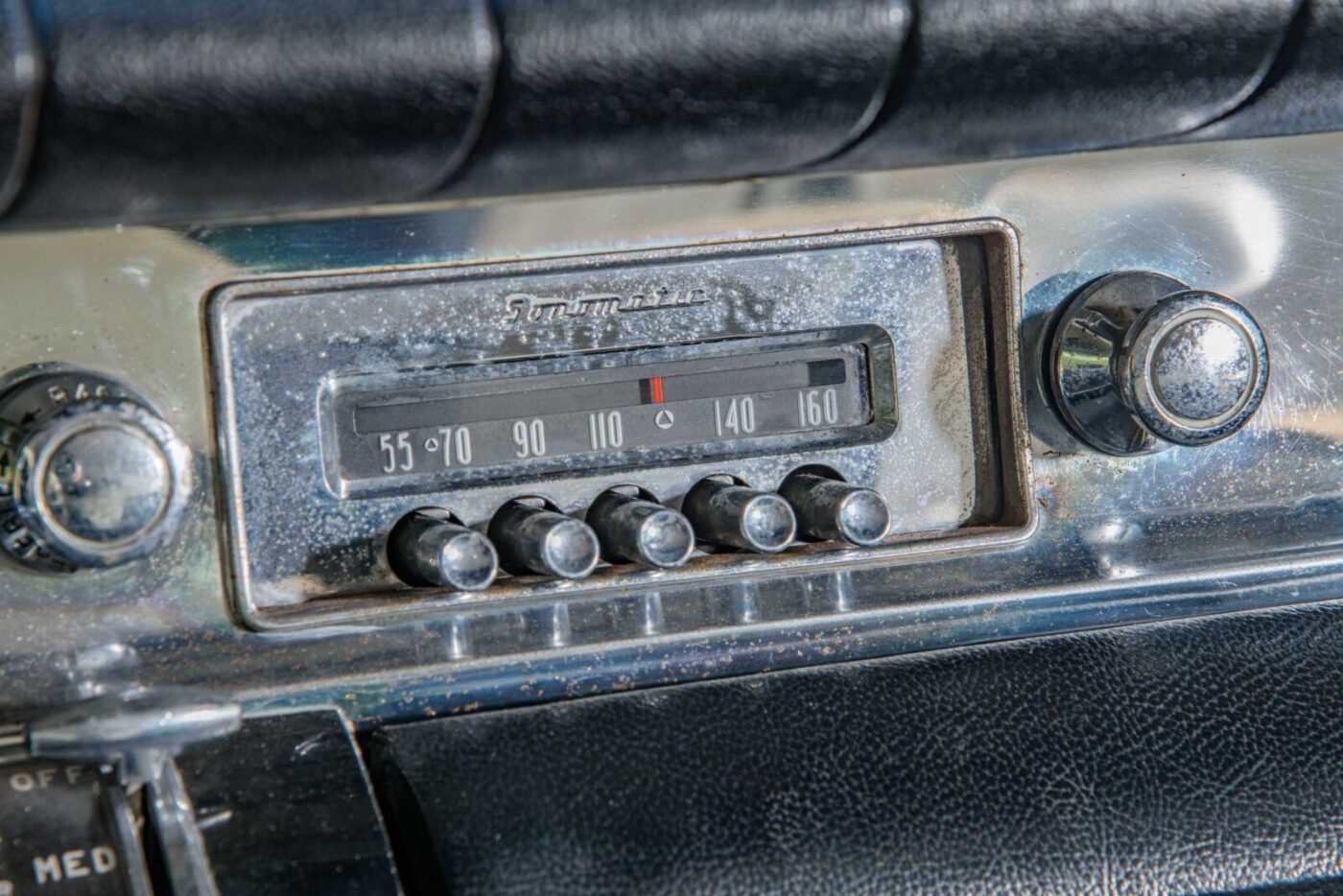
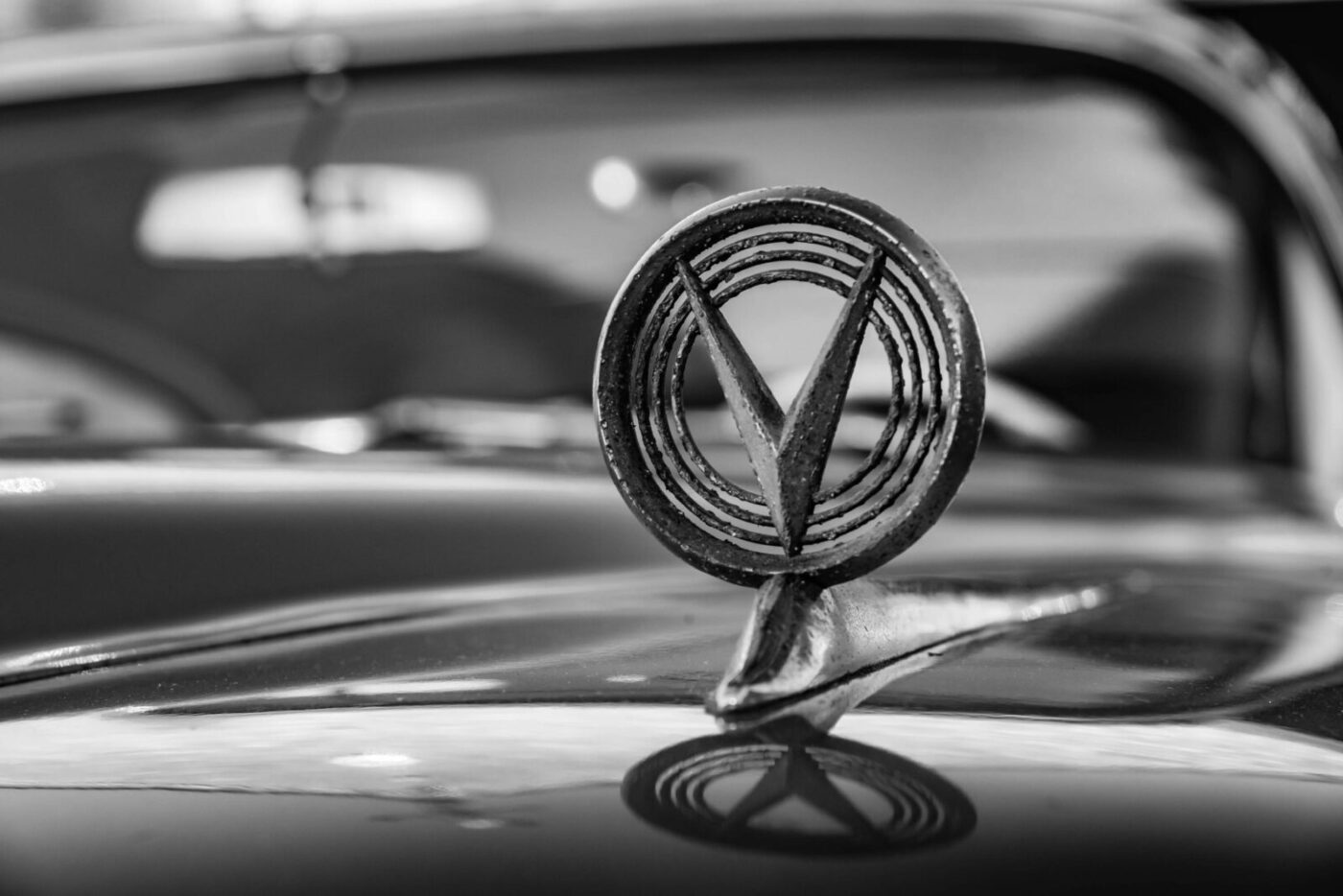
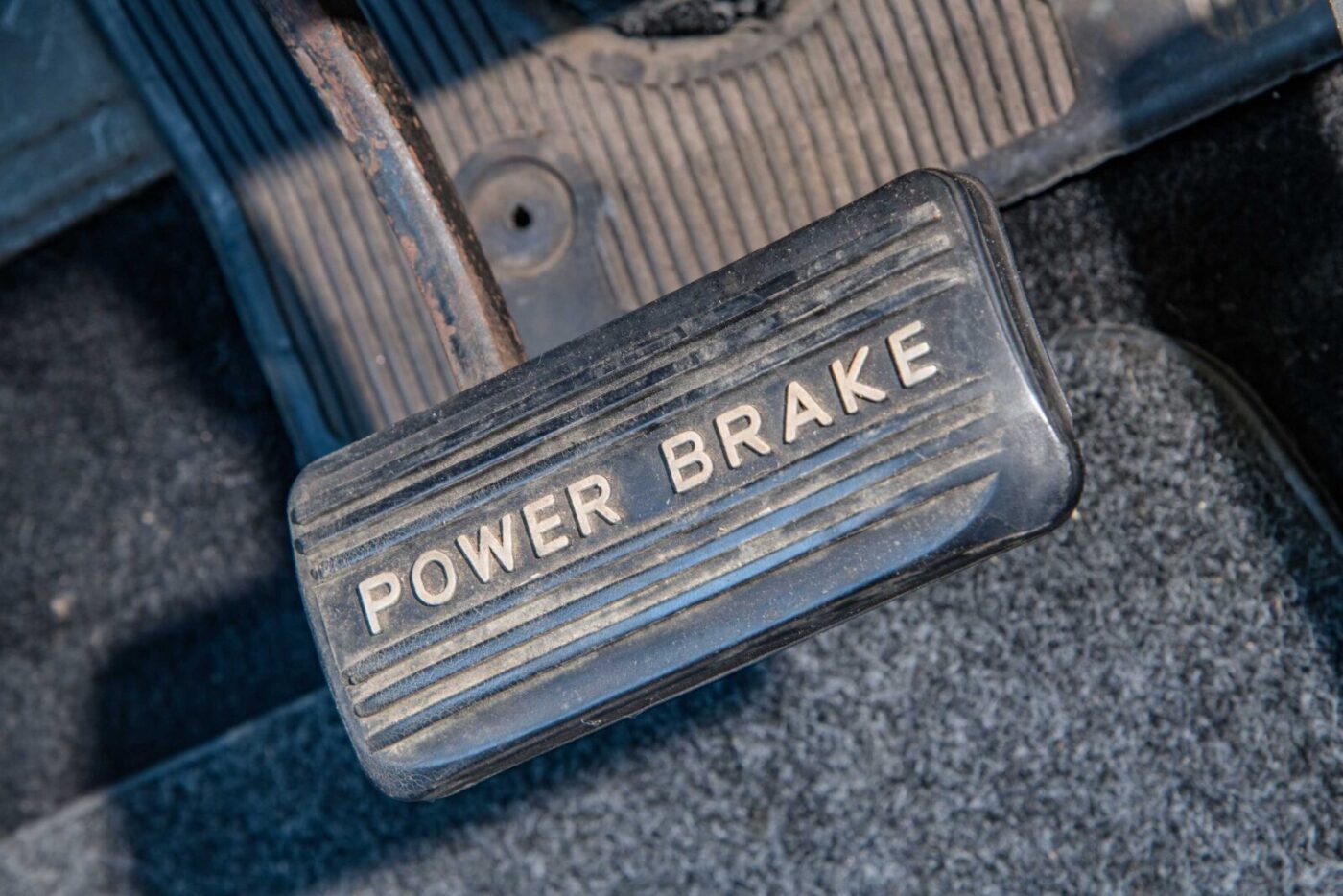
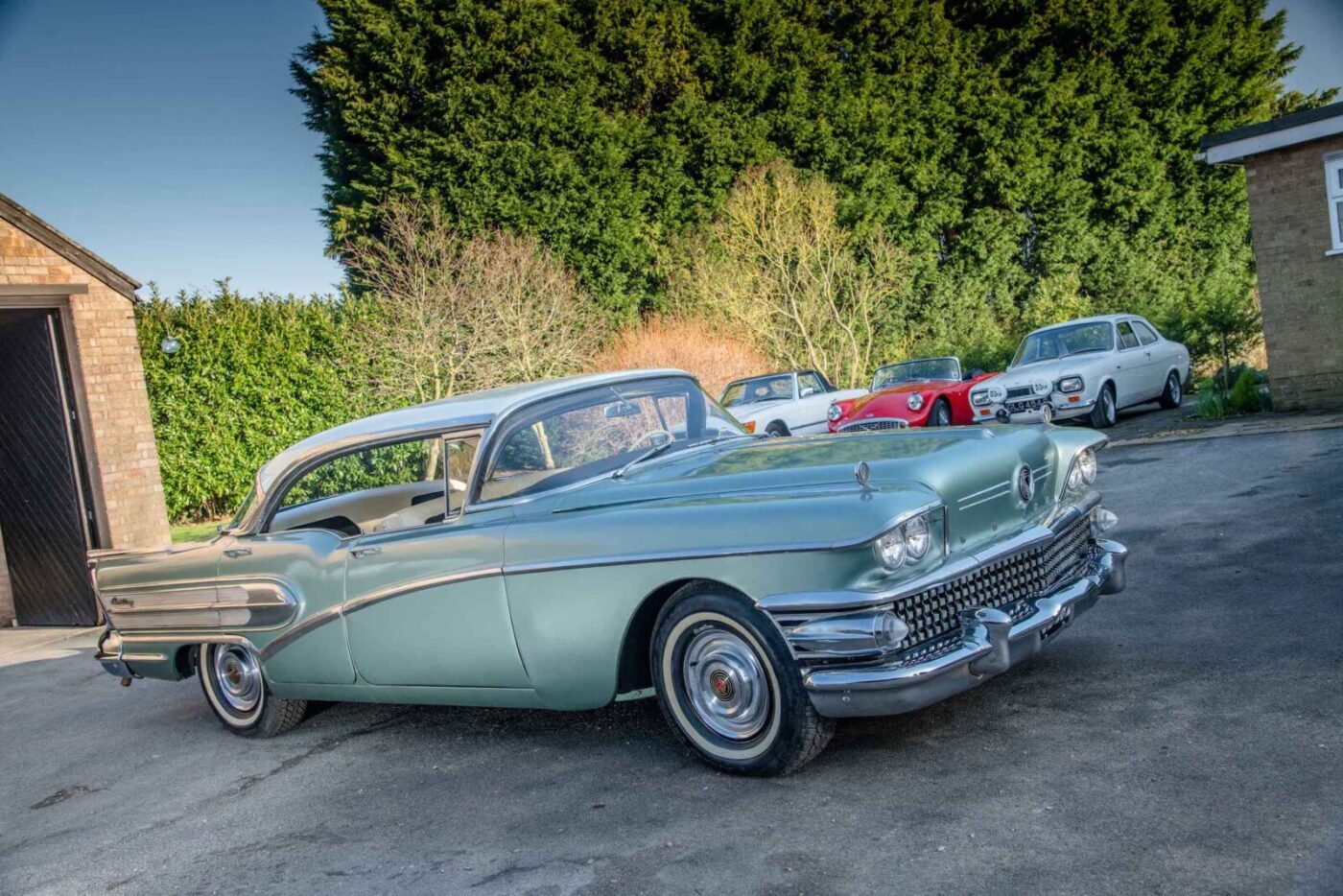
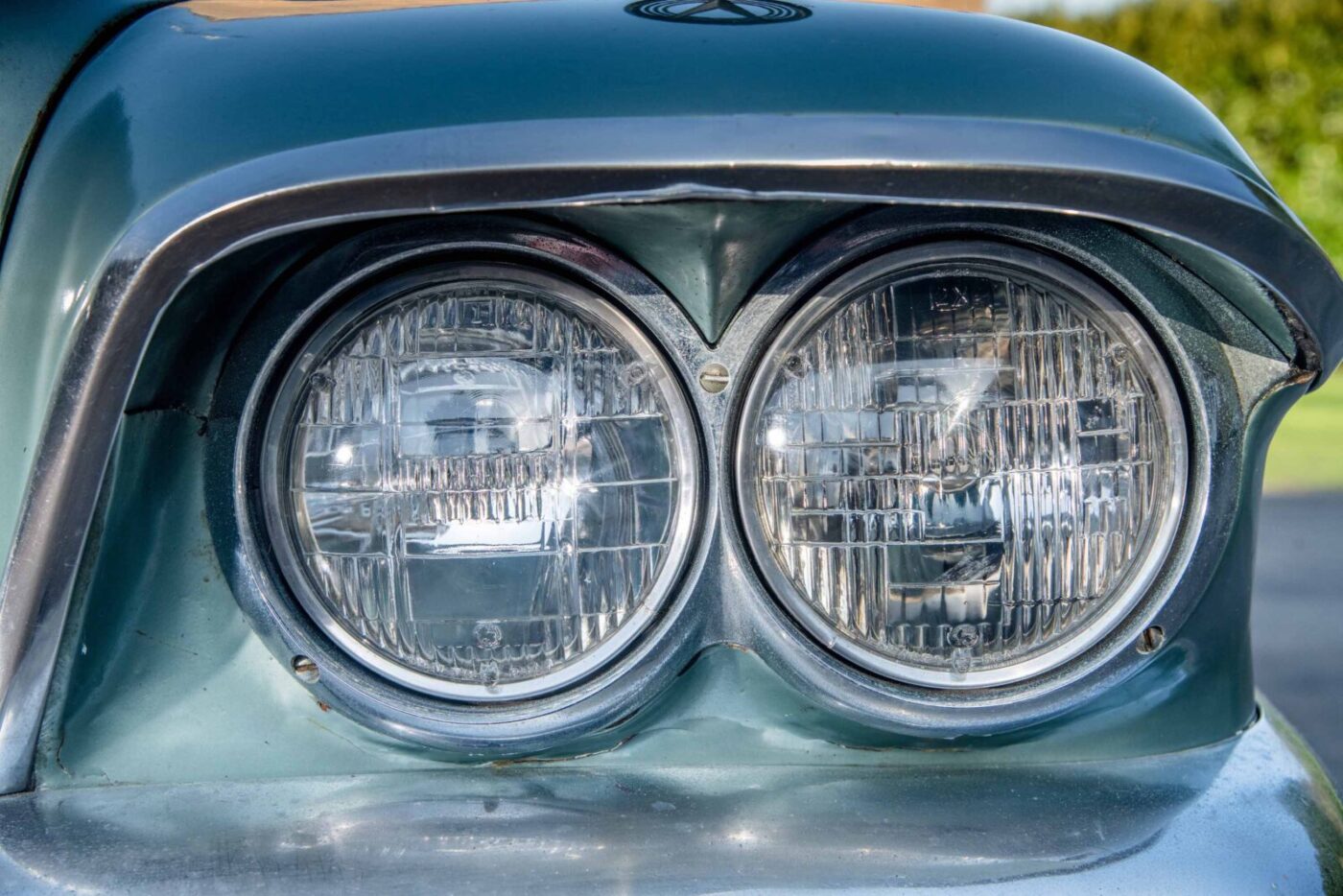
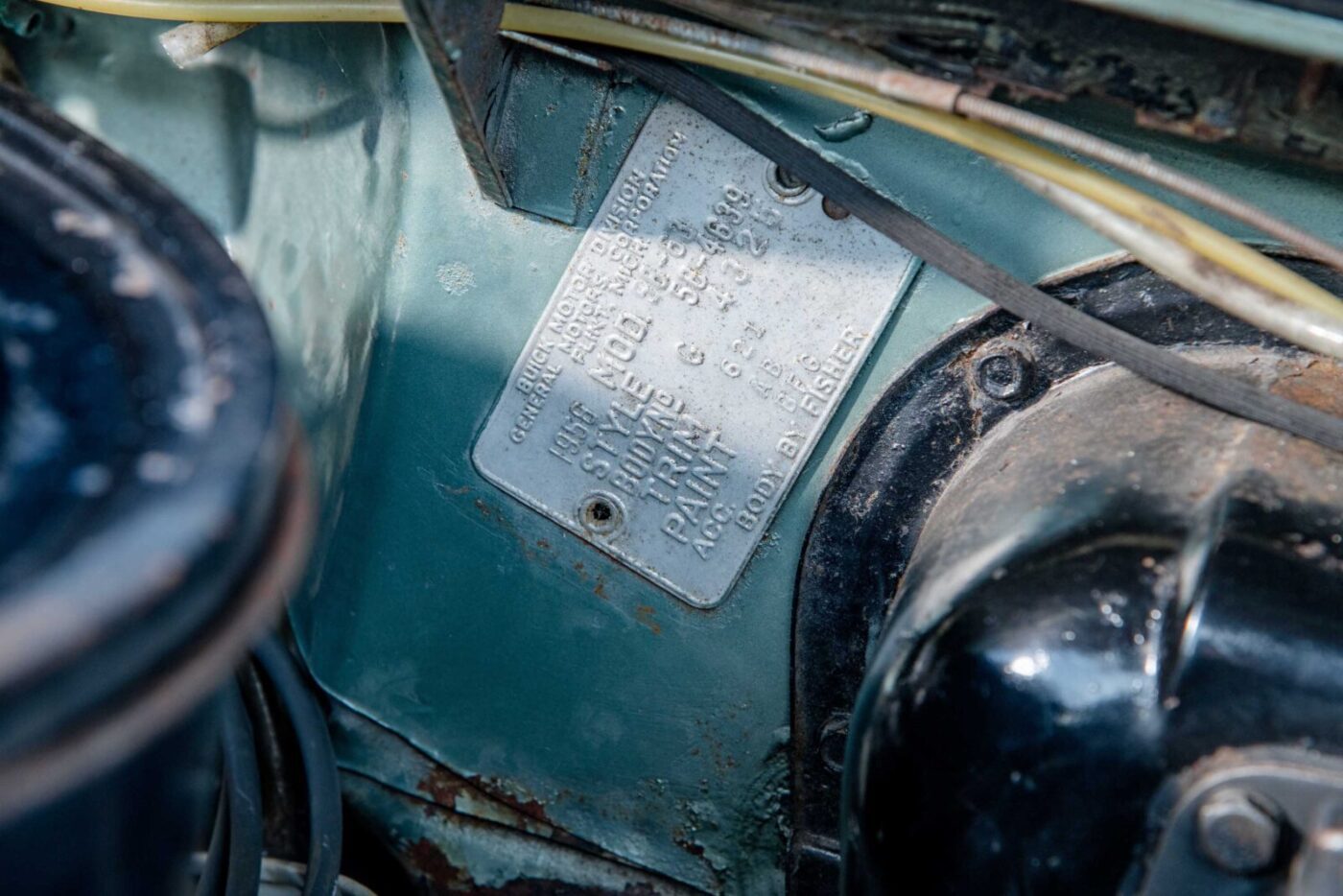
Full of innovations
“But it was full of innovations compared to what was in UK cars at the time, with air conditioning, power steering and power brakes. It does mean there’s more to go wrong though!”
Clive’s left hand drive car was imported new to the UK by GM dealer Lendrum & Hartman, originally in a metallic sylvan grey, before it was changed over the years to a darker grey with a black roof.
Rosie studying and living in Scarborough gave Clive an excuse to stretch the Century’s legs on the 70-mile run to the Yorkshire coast.
“It was a nice drive because a lot of it was dual carriageway so it was nice cruising along,” he says, but not so nice when the car broke down at the other end one ill-fated weekend.
“One time it would not start and so he spent all weekend trying to get it started,” says Rosie. “In the end, he had to go to the local bus garage in Scarborough and buy a bus battery to get it going. So all weekend he was doing that, and then he went home!”
Then there was the time the Buick left a cloud of smoke behind it pulling away from some traffic lights in a little Yorkshire town.
“I looked round and thought ‘there must be a fire, there’s a lot of smoke’,” he remembers.
“I set off, and realised ‘oh, it’s coming from me, it’s coming out of the exhaust’. Nobody else had set off because nobody could see, it was like a smokescreen.
“I stopped and had a look and at first I couldn’t work it out. But then I remembered it’s got vacuum wipers, and to overcome them stopping when you accelerate Buick very cleverly put a vacuum pump in the oil pump.
“Obviously the seal was leaking and it was chucking oil up the vacuum system, into the inlet manifold and out the exhaust. I disconnected it – and it’s still disconnected now. The wipers still work but if I accelerate up a hill, they’ll stop.”
READ MORE ABOUT SOME OF OUR GREATEST CLASSIC CARS WITH

A series of articles on our Cult Classics site.
Ghosts in the machine
The horn also tends to play tricks, randomly sounding and refusing to stop.
“It must have been just after Clive had got it and it wouldn’t stop going, it was just blaring,” says Rosie. “He was in traffic and it looked as if he was stealing it. Eventually he pulled over and disconnected it. It does odd things.”
The couple were married towards the end of 1977, building a garage at their first home complete with an inspection pit.
“The pit leaked so it ended up like a swimming pool,” laughs Rosie.
“If I wanted to use it I had to use a bucket to get the water out,” adds Clive, who stripped the car down to bare metal and resprayed in colour-matched paint from the inner wings.
“The sylvan grey colour apparently has a lot of green in it and over time becomes more green than grey! So the colour it matched with was Volvo grey green metallic
“The bodywork was pretty good, but I spent time taking out bodges and trying to put in the proper parts like the steering ball joints.
“Rather than get new ones, they’d hammered them in. It would pass its MoT but you wouldn’t want them like that.”
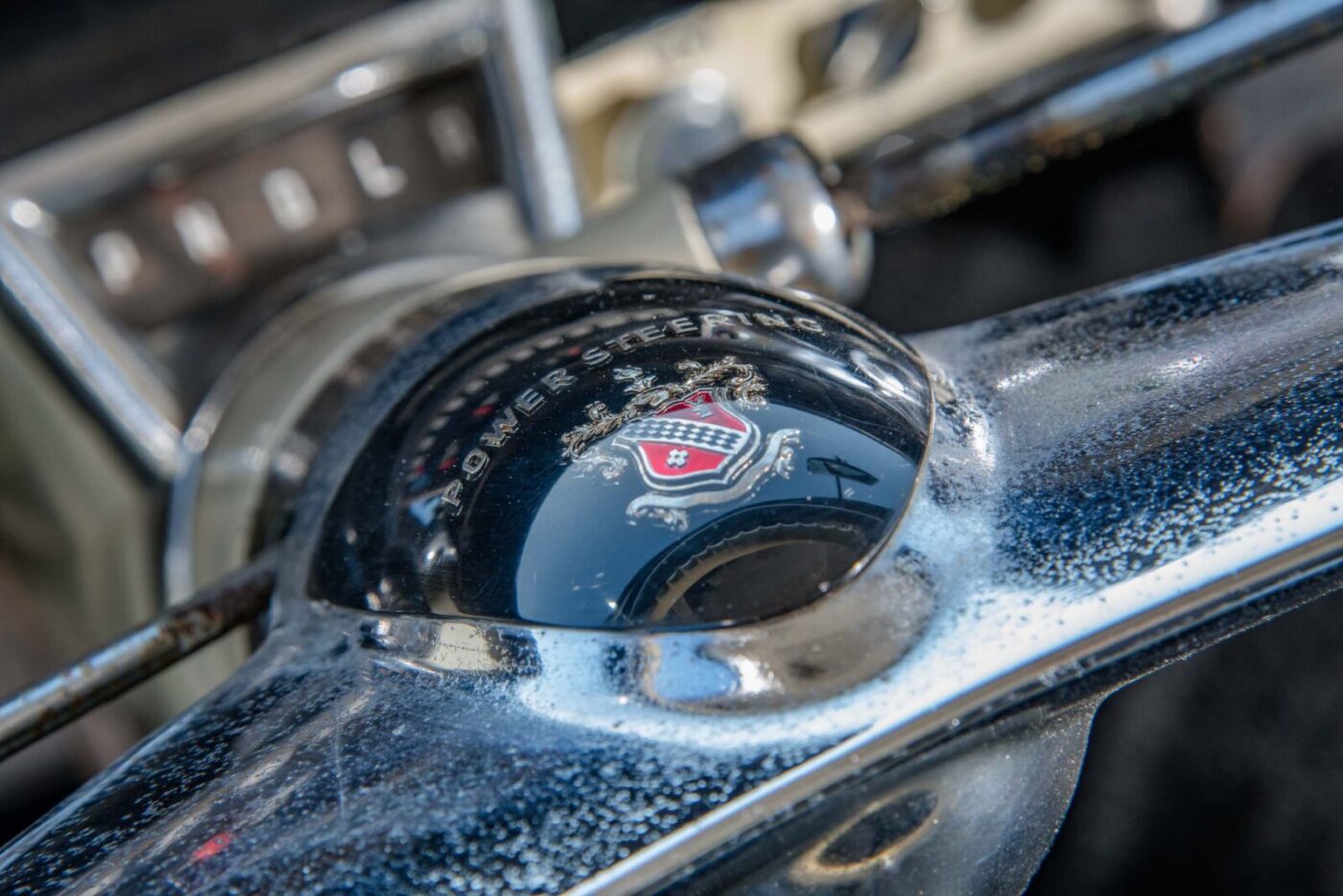
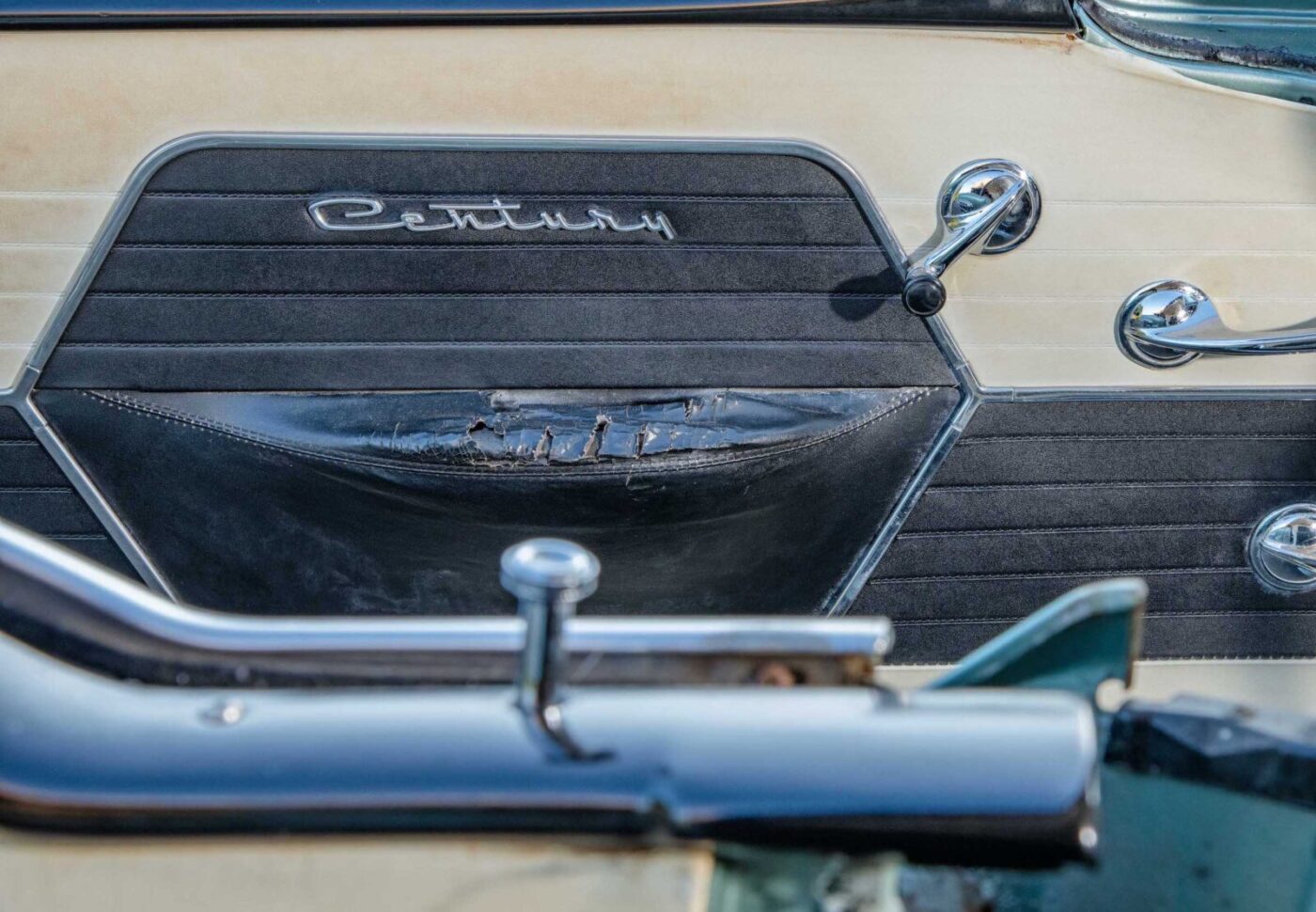
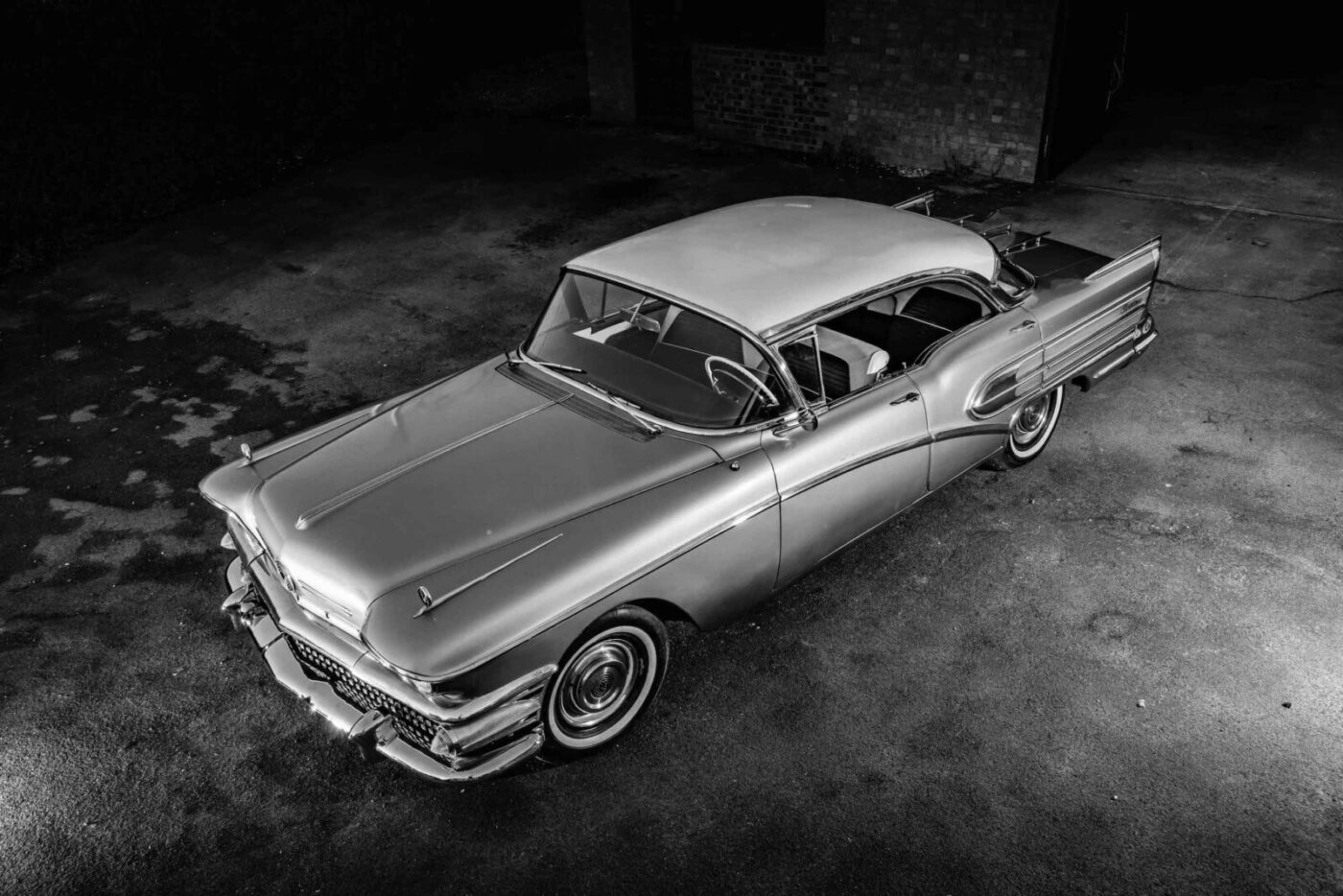

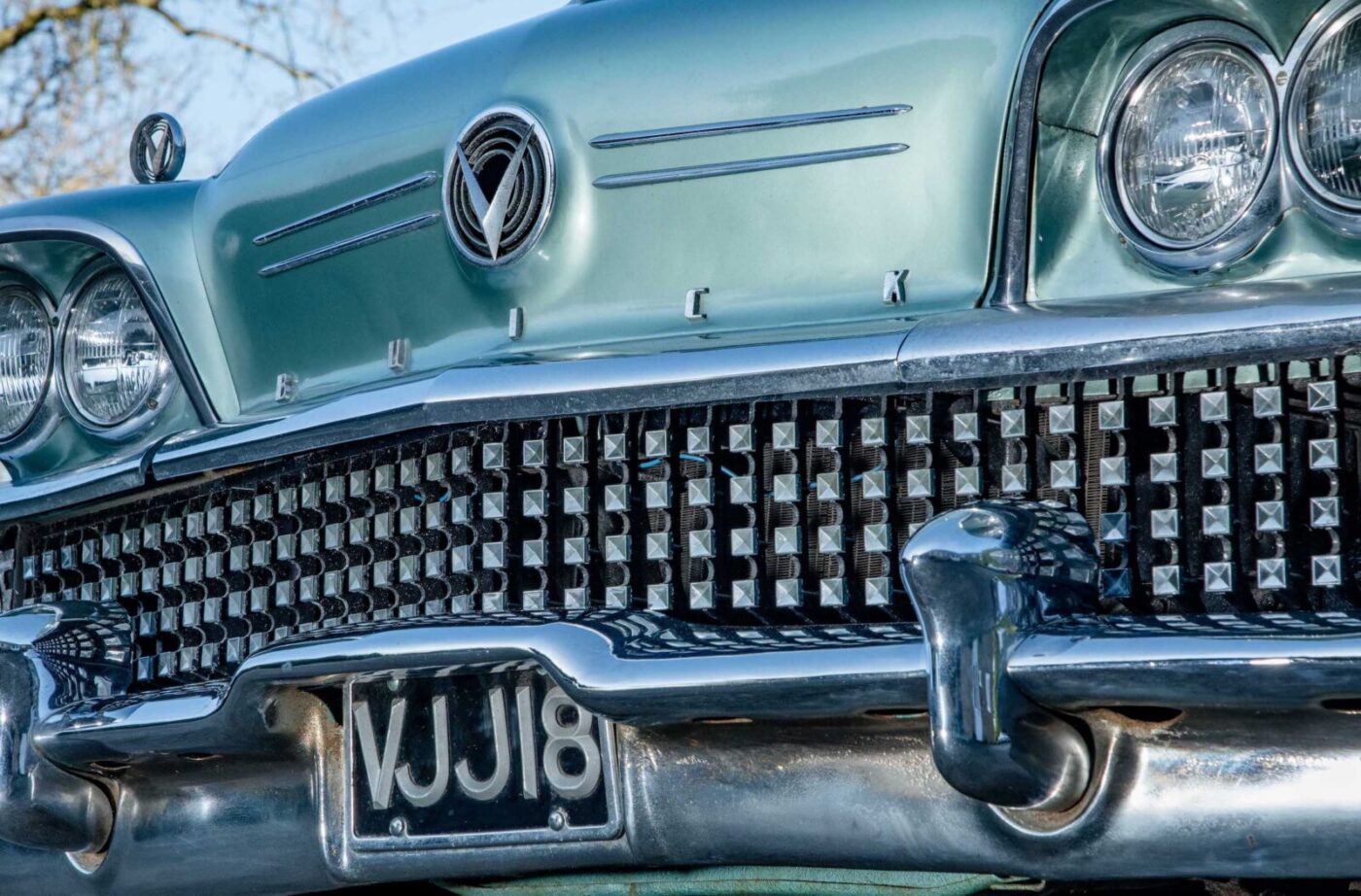
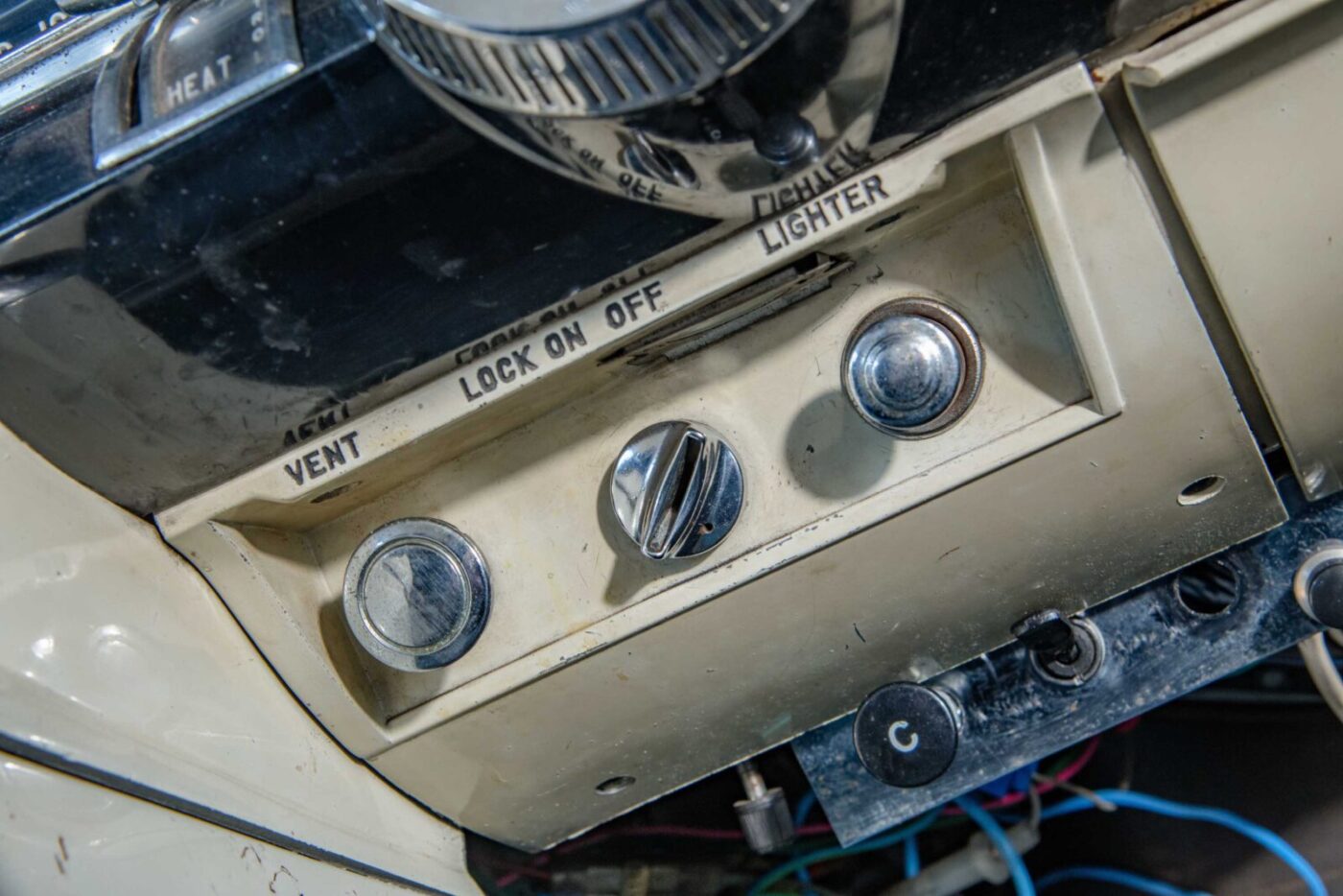
Niche parts specialists
Finding spares wasn’t easy in the pre-internet days, Clive either scouring Hemmings Motor News for old Buick dealers or hunting down niche UK specialists.
One such dealer was Rodley Motors, about a 10-minute drive from home.
“This guy and his family went across to America with containers, brought them back to England and filled what was an old service station full of American parts,” he says.
“He was really helpful, and I was down there all the time. He then bought an old mill and stacked that floor to ceiling and, because I knew him, he used to let me go there and just wander around looking for bits and pieces for my car.”
Living near Leeds and Bradford, both cities with a strong engineering tradition, also helped.
“Part of the rear bumper had rusted away, and you just can’t get them, so I had it made in stainless steel,” says Clive, who fabricated the petrol cap himself.
“It’s relatively simple mechanically, and I’ve been able to do a lot of the work myself.”
Over the years, this has included retrimming the shrunken dashboard leather and the rear seat squab, using an original ‘50s roll of matching fabric “which cost a small fortune from America”.
When their daughters came along, it became increasingly impractical to use the car as a daily driver.
Difficult to park
“It was unfeasible to use it every day,” says Clive. “It was difficult to park it anywhere, and it would do 13mpg downhill, nearer eight usually, so we bought a £50, six-volt Beetle.”
Rosie admits that may have been the time to sell the car, and even Clive concedes: “When you’re starting a house and families and stuff sometimes money’s a bit short and when you’ve got a car sat out there that you’re not using, it’s a bit of a luxury.”
Yet still it remained.
After years of only occasional use, the Buick was more permanently laid up when the family moved south to Hemel Hempstead, Clive securing a job as an IT consultant in London.
Moving the enormous Buick proved far from straightforward.
“They were going to load it into a wagon to put it in storage while we moved, but when it started up it burst into flames,” says Clive.
“The carburettor had started leaking, pumping out fuel straight on to the exhaust manifold. It looked bad at the time, but it didn’t do a great deal of damage.”
The car was finally hauled into the van, but there were further problems at the other end of the journey – a huge non-running car and a steep drive at the new house leading up to the double garage.
“There was a pillar down the middle of the double garage,” says Rosie. “Clive decided to put a winch thing around it and hook it on to the car and get it up the drive, which was fine until the pillar started giving out, so he abandoned that.”

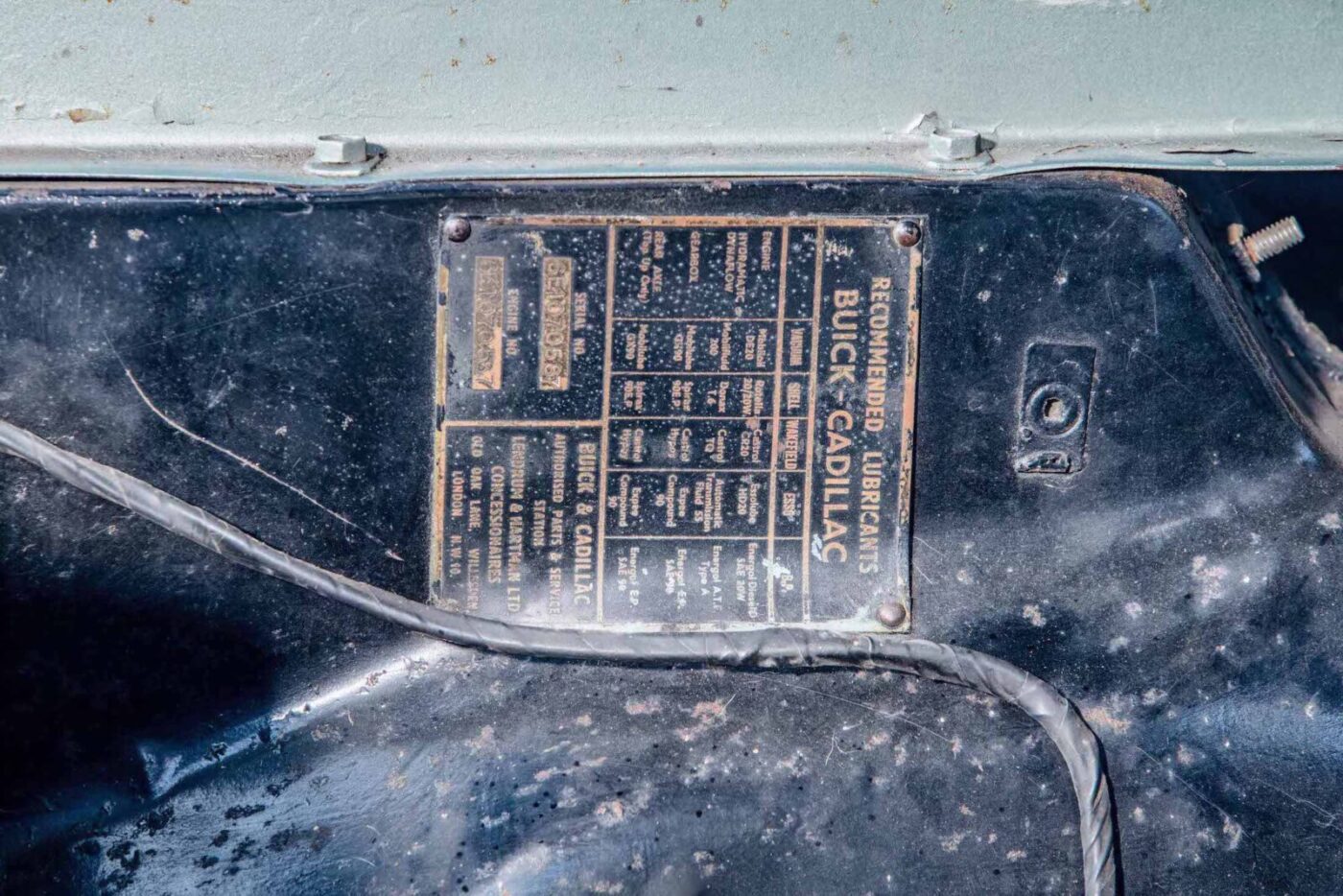
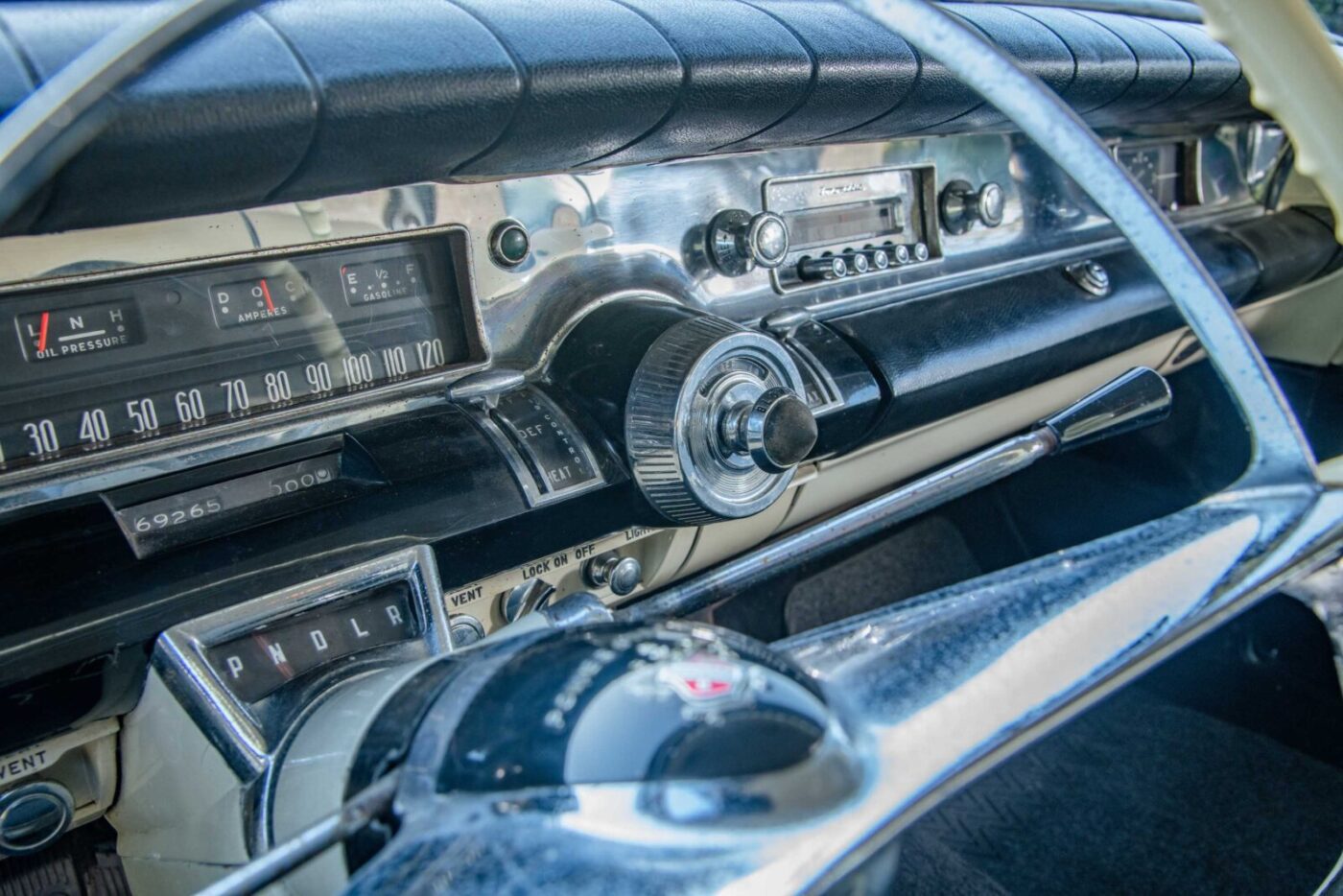
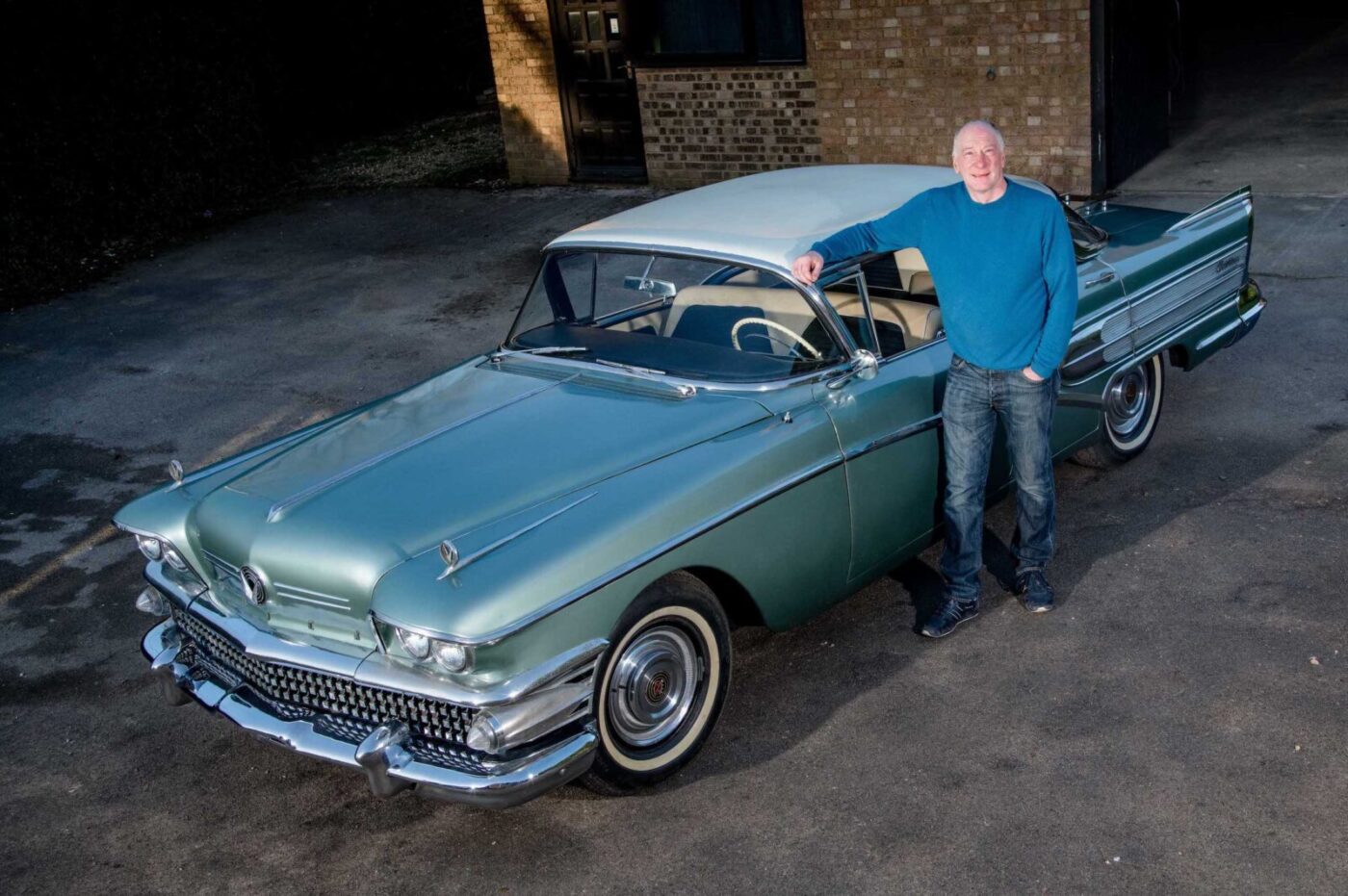
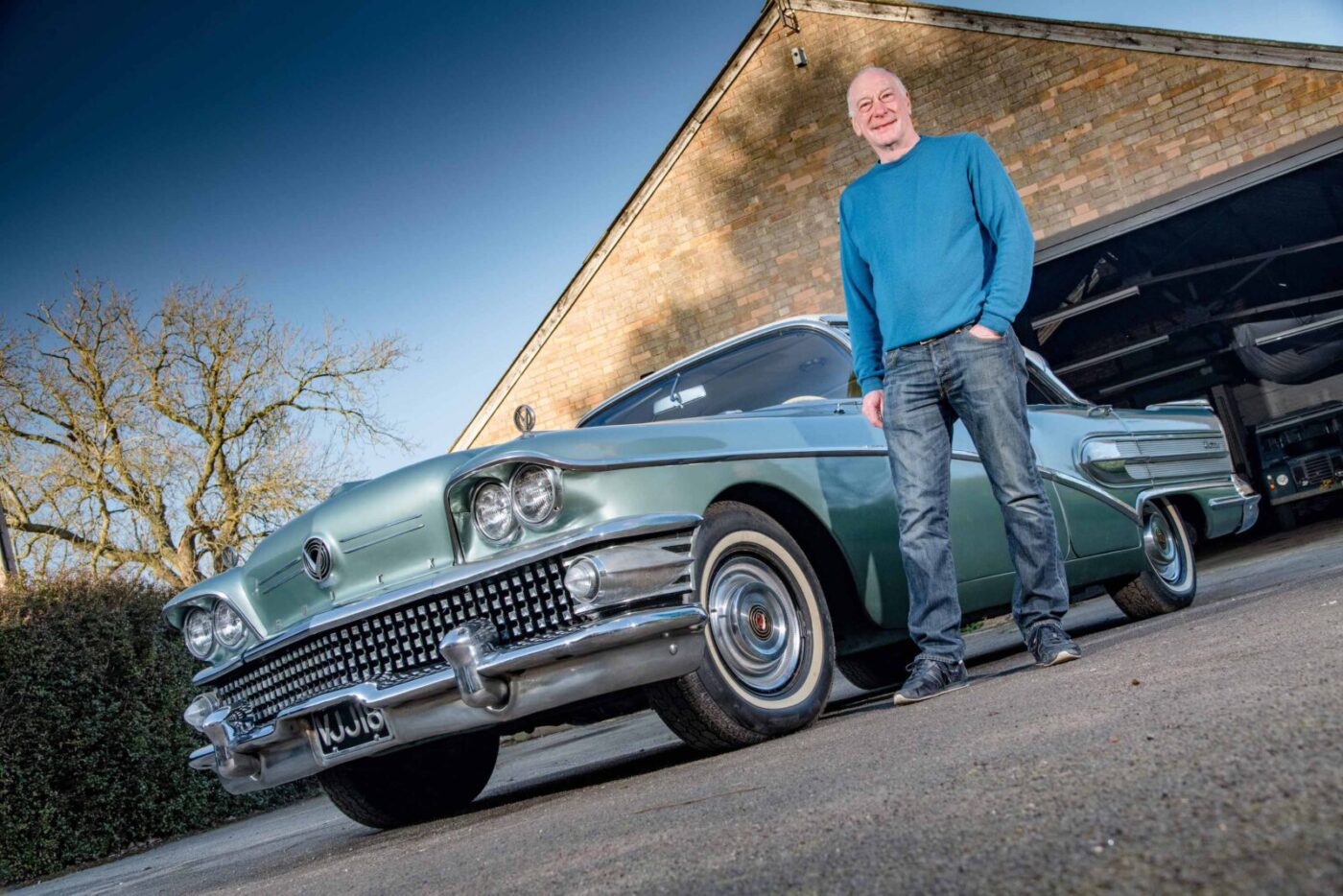
Fried carburettor
In the end, Clive removed the fried carburettor and got a replacement from Watford American Spares, eventually driving the Buick up the slope and into its new garage, where it stayed for some time with its bumpers removed so tight was the fit.
“Because we were so busy and I was working away a lot, I didn’t get to use it for quite a long time,” says Clive, who made sure it was starting and stopping as it should before the couple moved to Wisbech about three years ago.
Finally, the Buick has the space it needs, sharing a barn with a 1968 Ford Escort with a Lotus Twin Cam engine, a 1960 Daimler SP250, and a 1979 Mercedes 450SL, all far more recent purchases.
Work on the car has played second fiddle to renovating the house and garden, but Clive has continued to collect parts over the years.
He was tempted to have the Century resprayed, but has opted to leave it looking more its age.
“It is what it is,” he says. “I think it shows its age, but it’s not too bad. There are little bits of chrome I might do.
“Generally I like to try and leave them as original as I can. If there’s a bit of wear and tear I tend to leave it unless it looks really bad.”
The electronic ignition was playing up when we visited, and the horn had once again been disconnected after another attack of the gremlins.
But Clive hopes to have everything ironed out in time for the summer, having joined the Wisbech Historic Vehicles Society.
“I’m hoping to get it in condition to go on runs with them,” he says. “Also, quite near here there’s a place called Parsons Drove and they have a massive car event there every year. You get a lot of American cars there, so I’ll take it there in the summer.
“I’m looking forward to driving it around here because the roads are pretty terrible, so I think it might suit the softer American car suspension.”
Despite all its idiosyncrasies, Clive has never been able to part with the car that has been part of his and Rosie’s lives for more than four decades.
Big and garish
“It’s such an unusual car,” he says. “A lot of people don’t like them because they are big and garish, but I think they’ve got style.
“To me, you can’t get a more typical ‘50s car. It’s just always been there, it is good fun, it’s just nice to go and sit in, and even nicer to drive.”
“I think as long as we’ve got the health and wellbeing to be able to keep it and house it then it will probably stay with us,” adds Rosie. “It’s the sort of car that you fall in love with. Cars today are more disposable, but that one’s got staying power just because of what it is.”
What it is…is part of the family.

